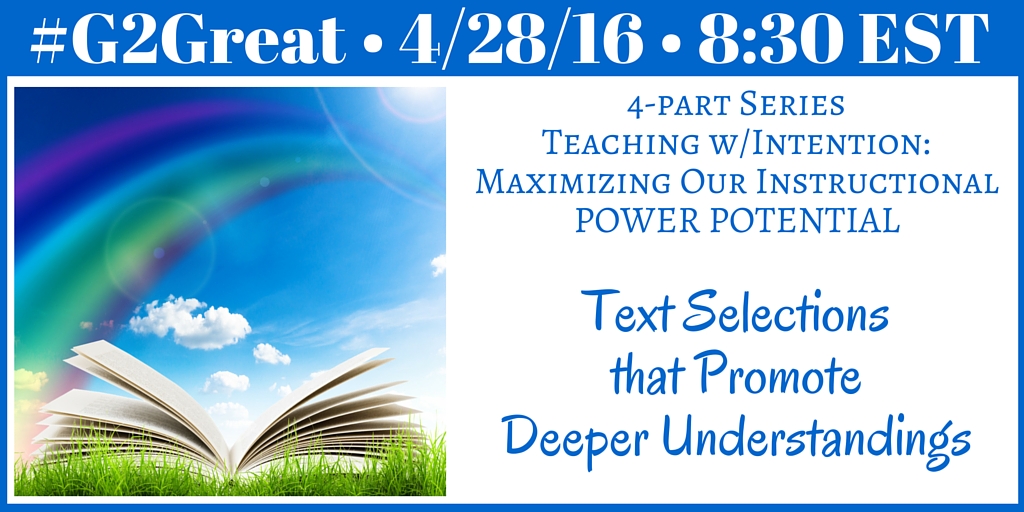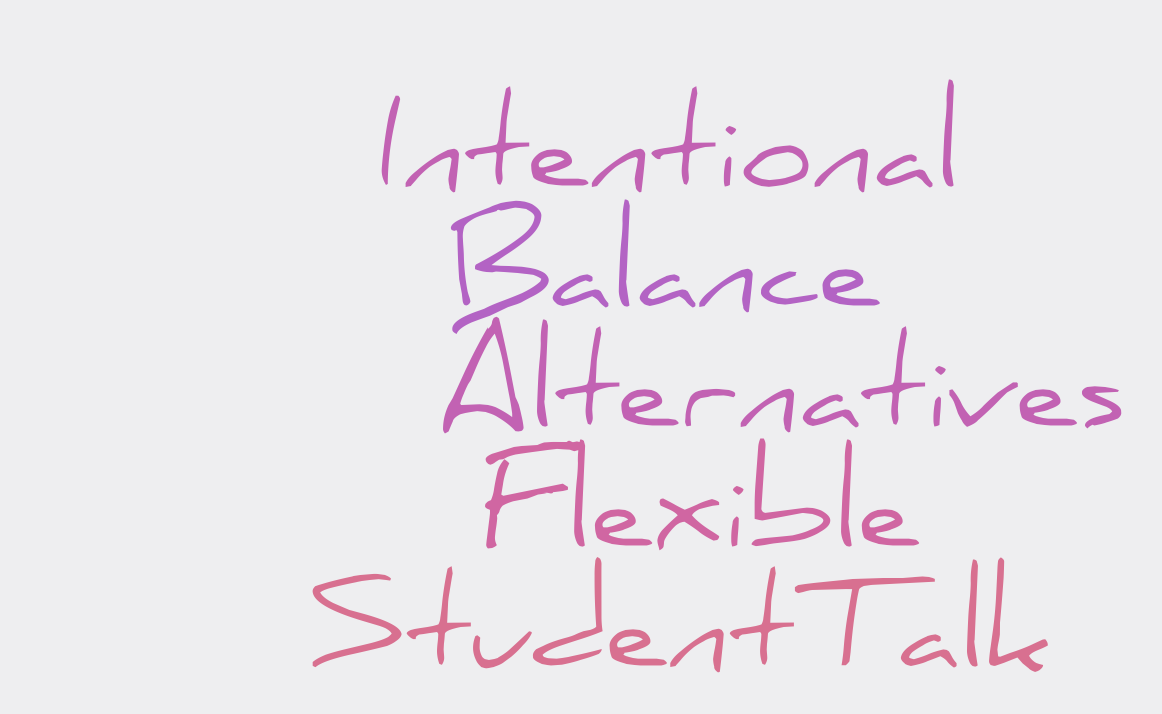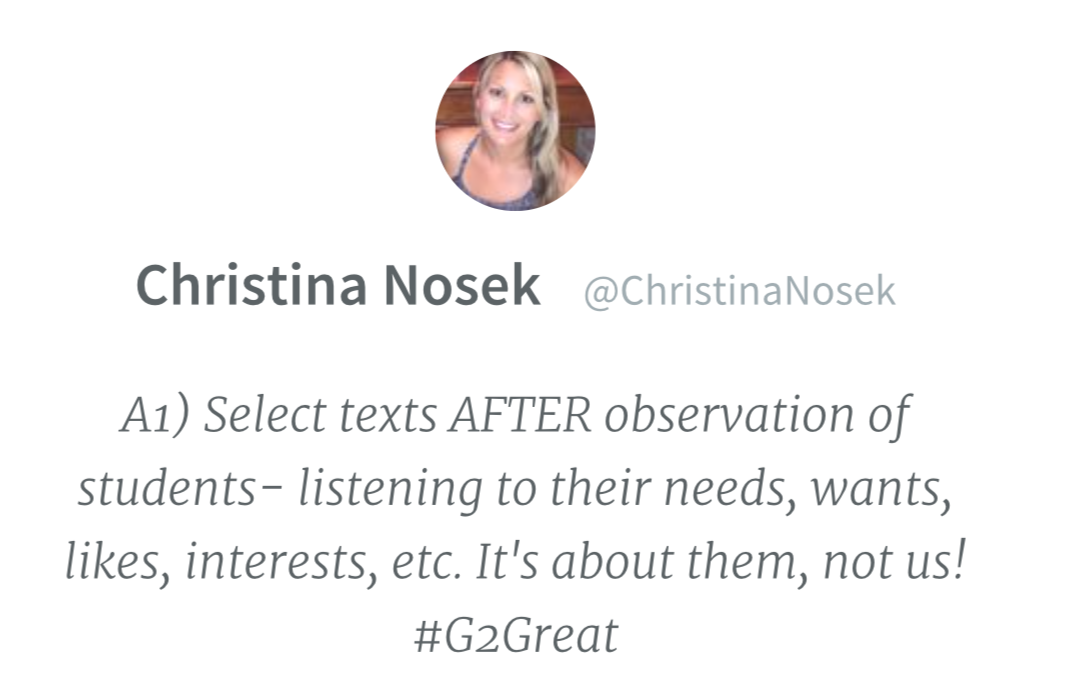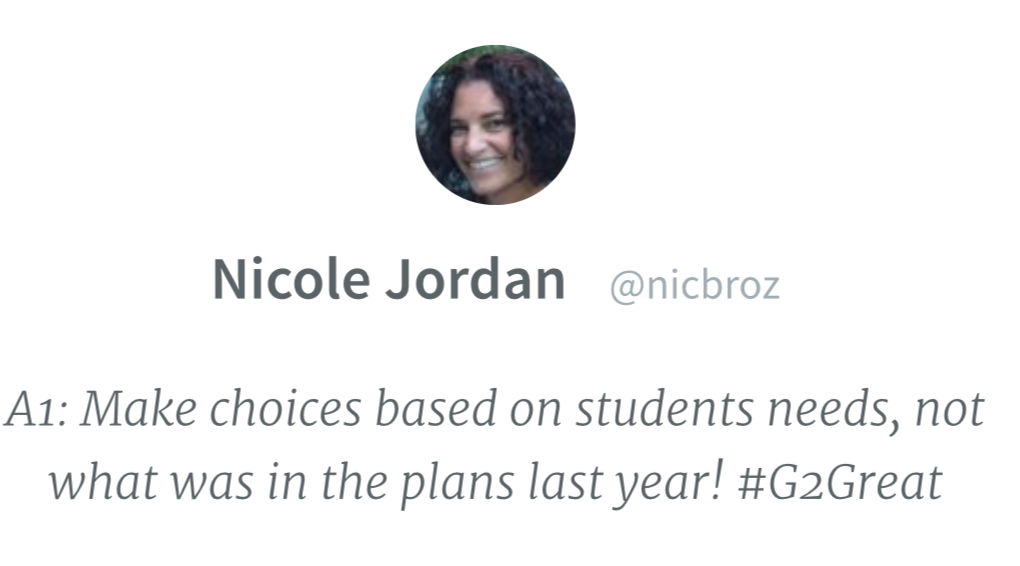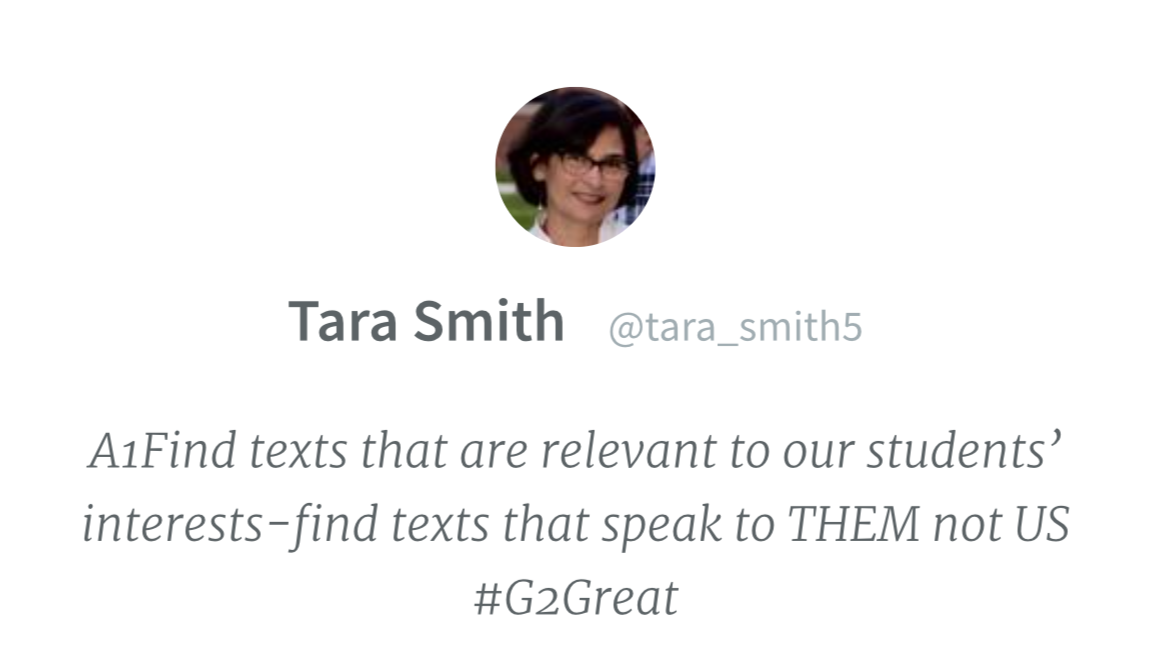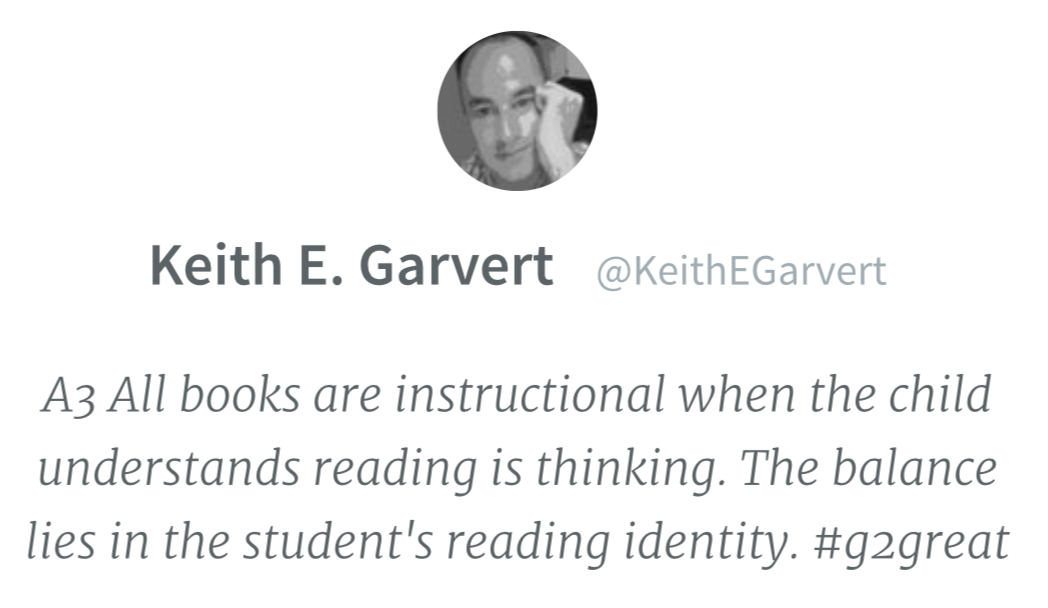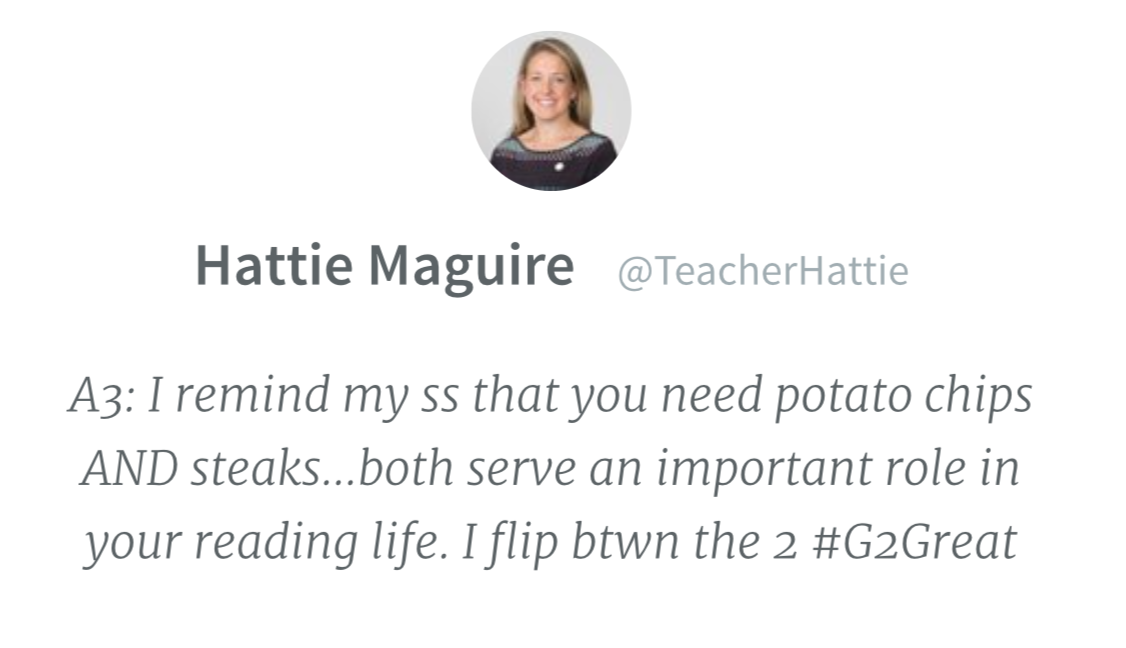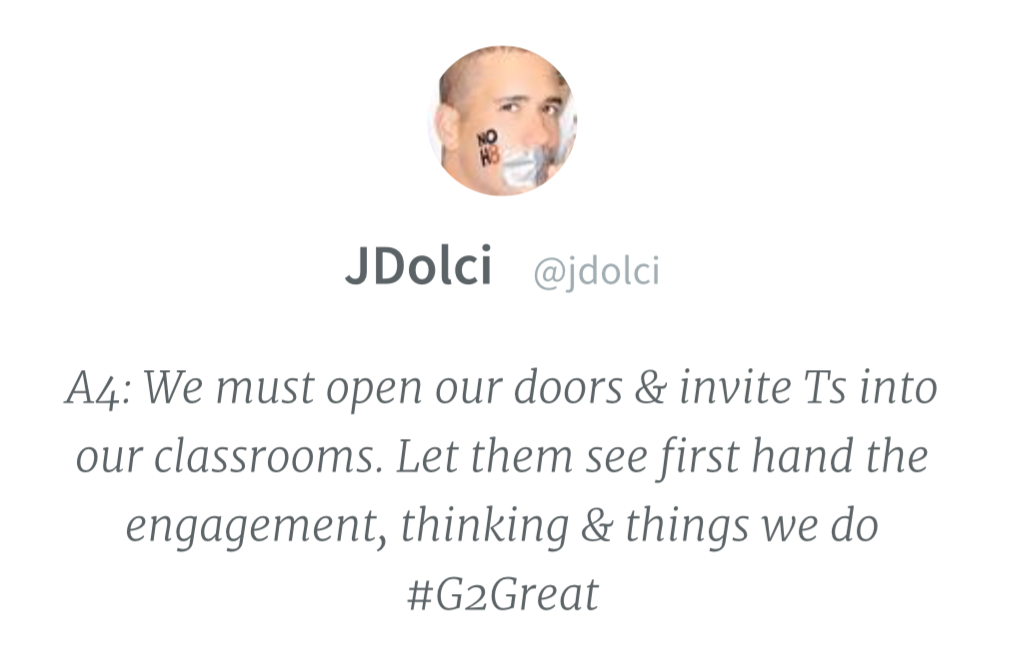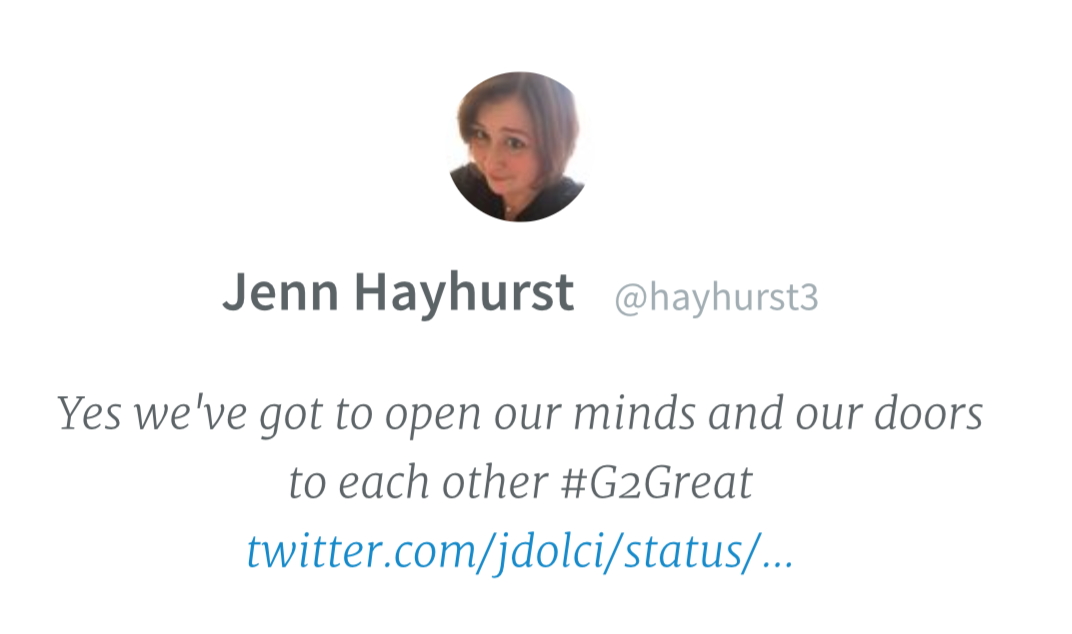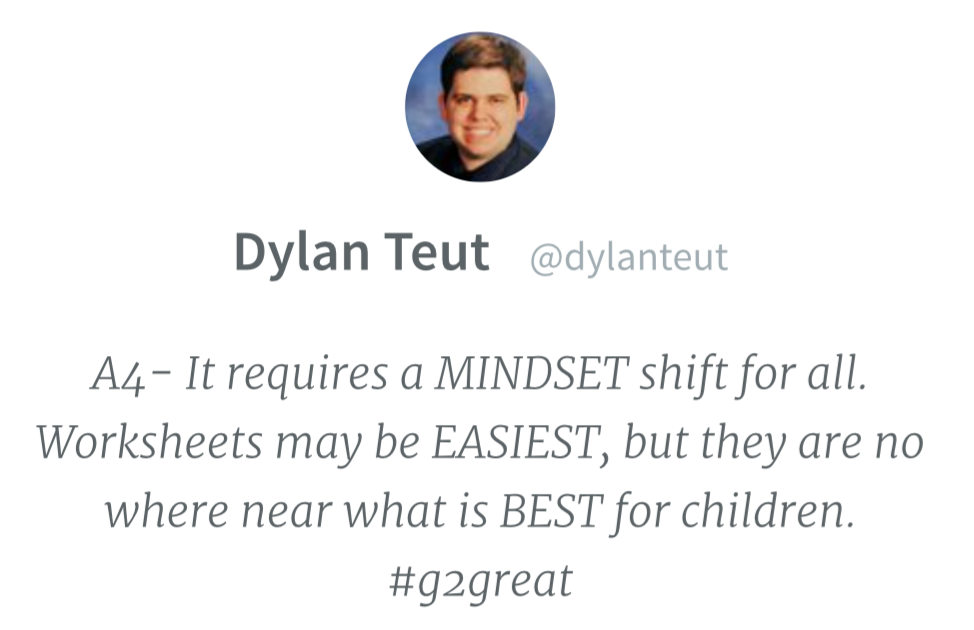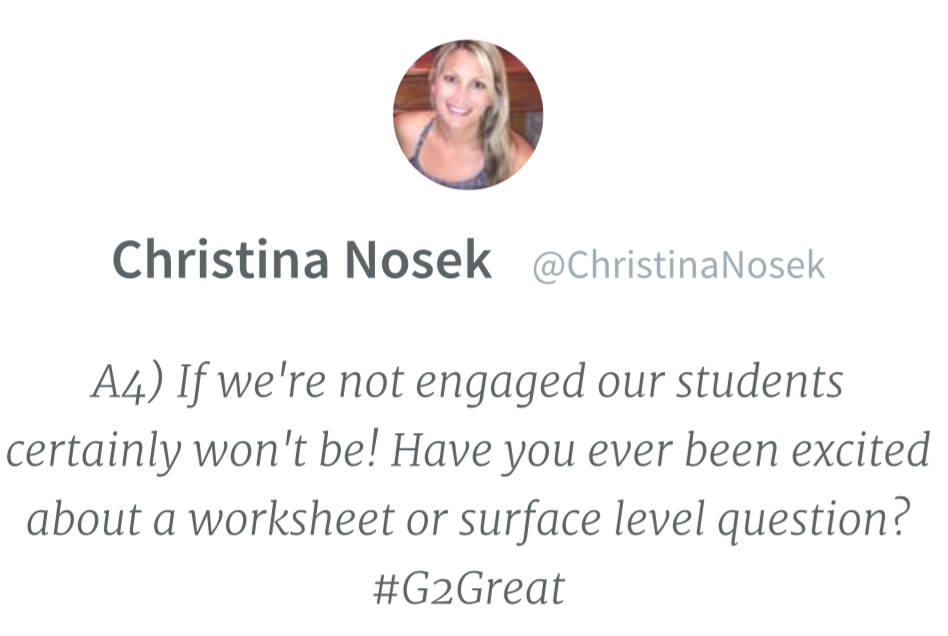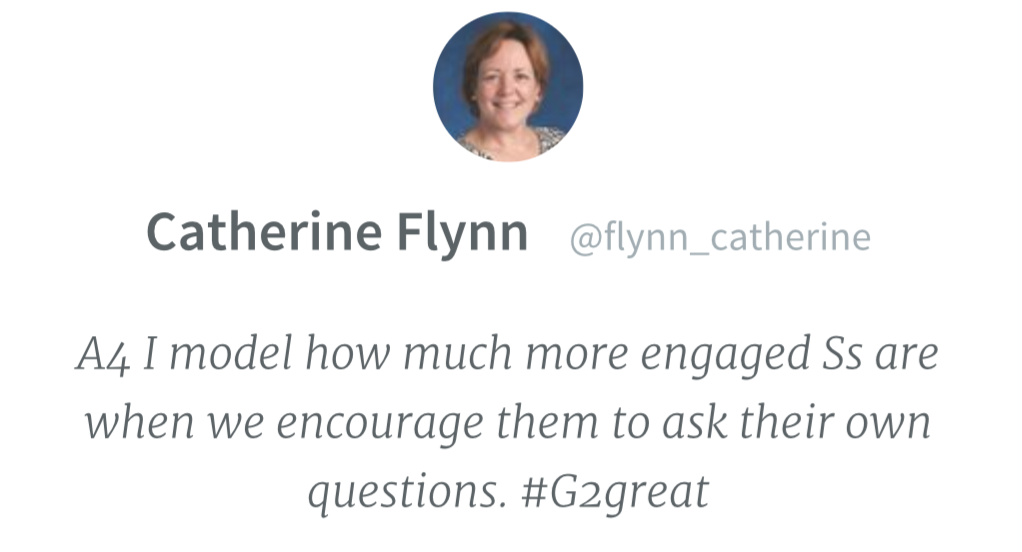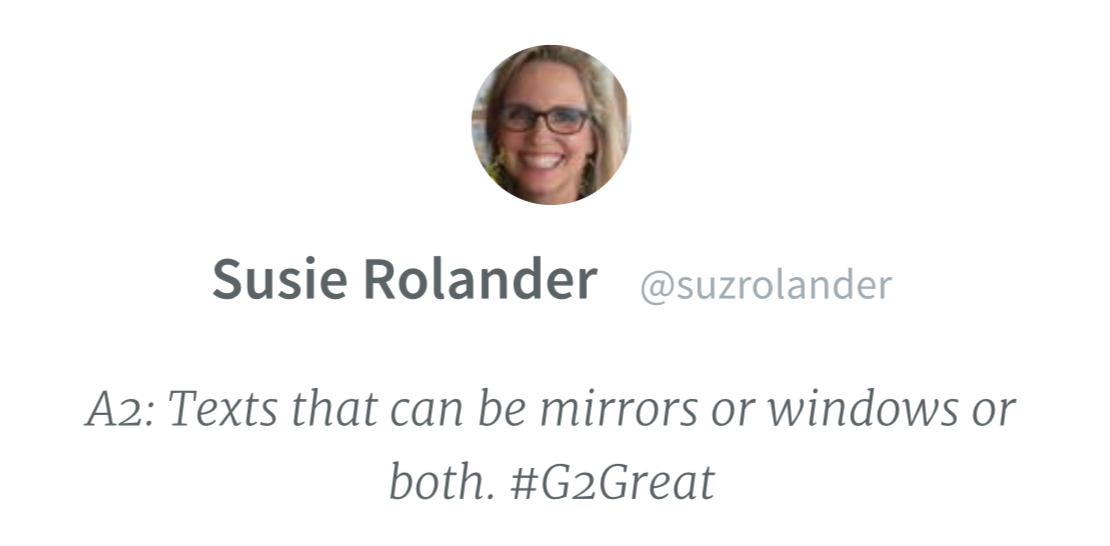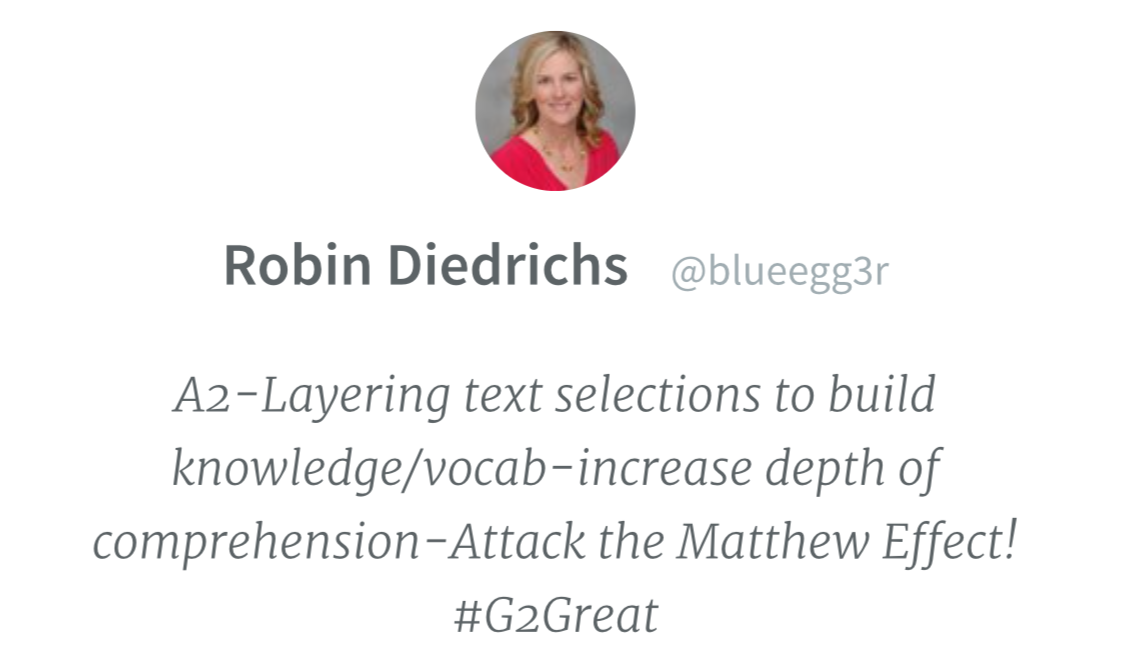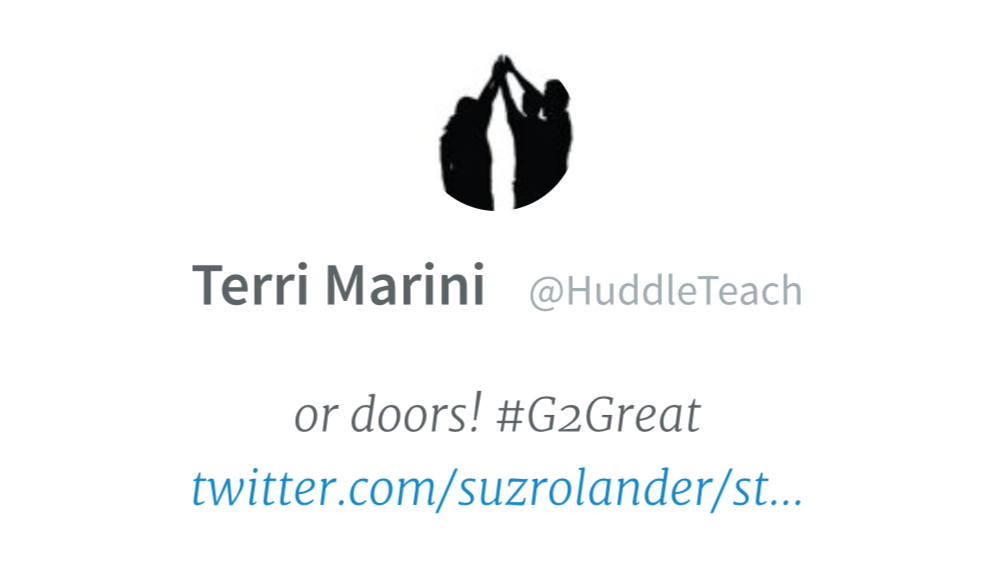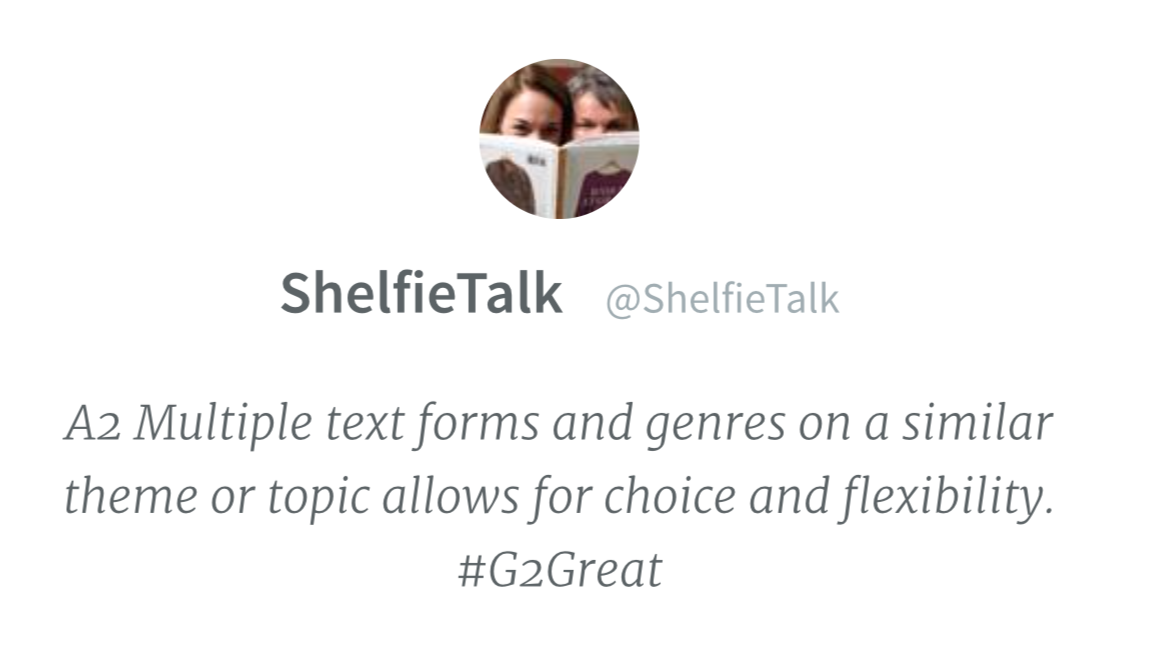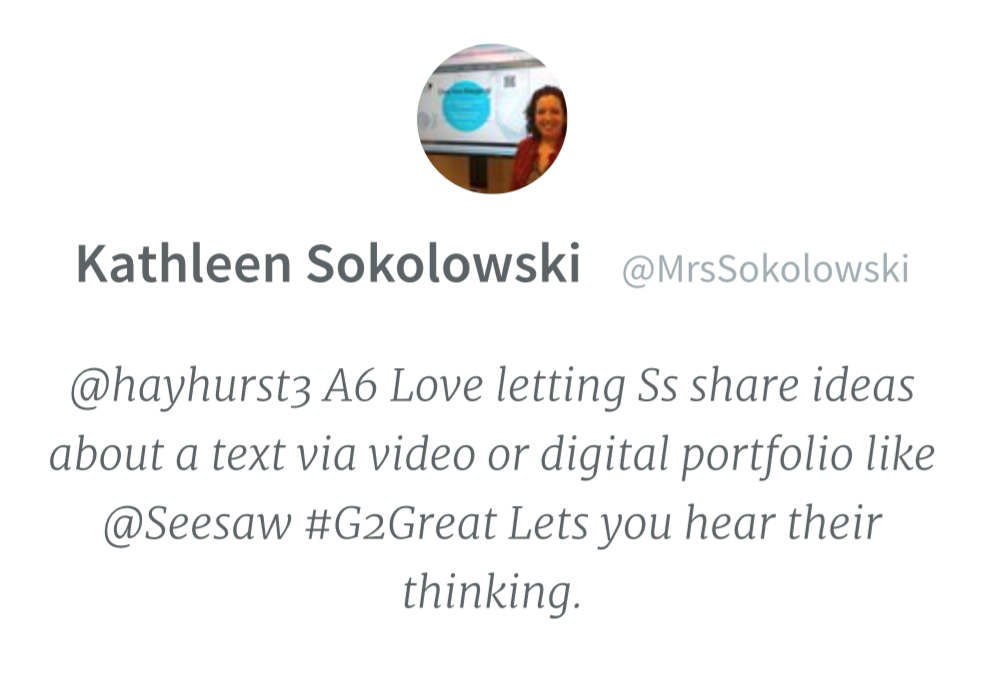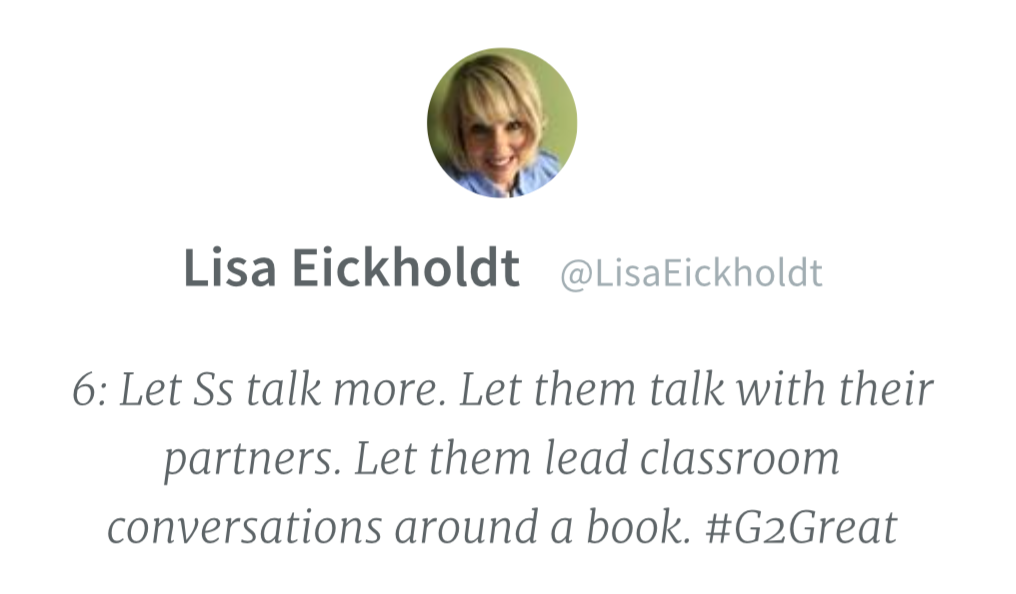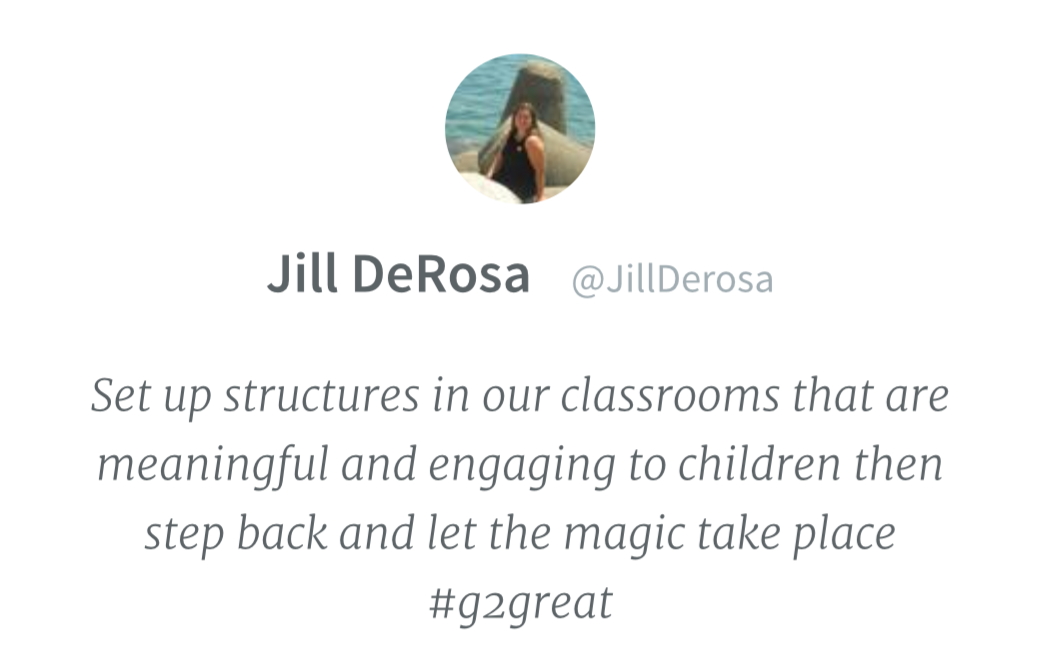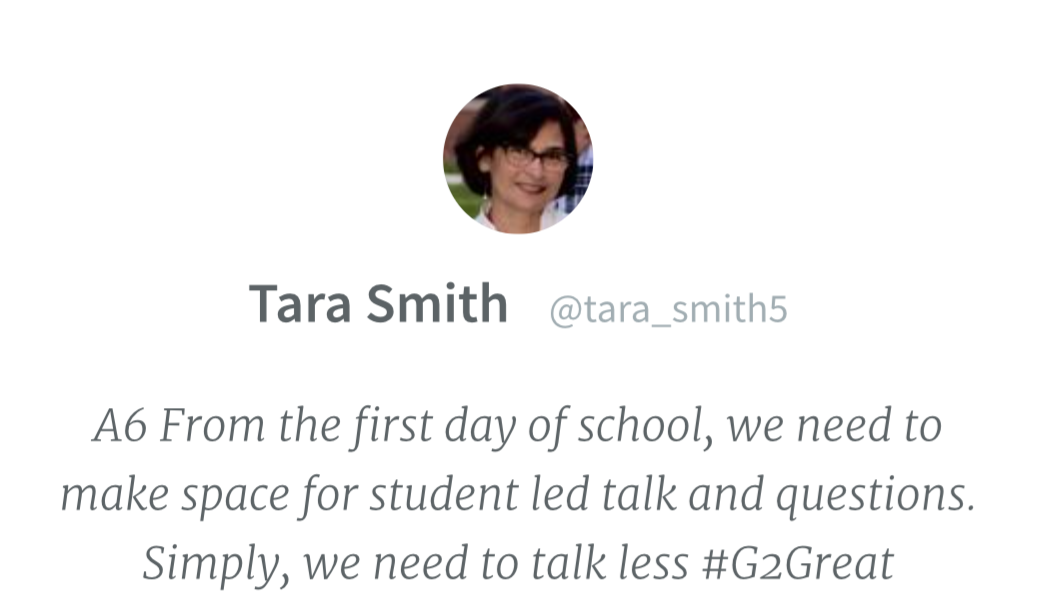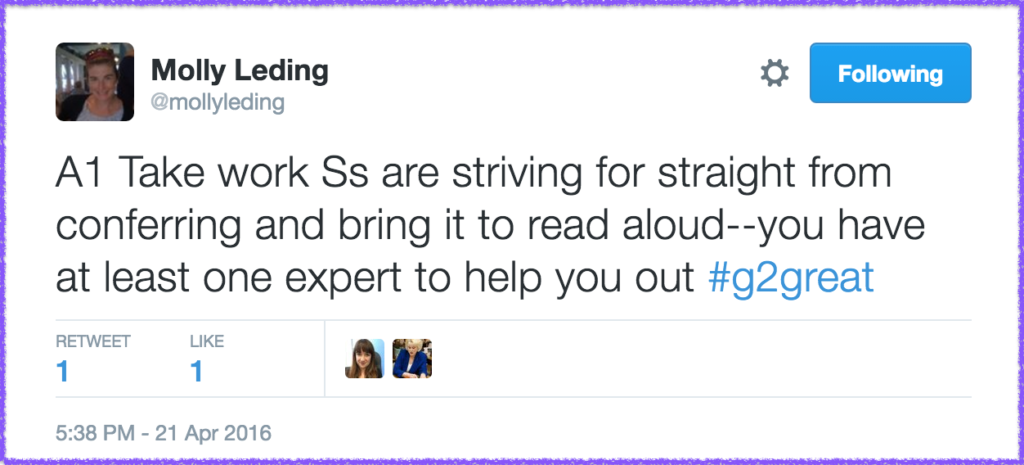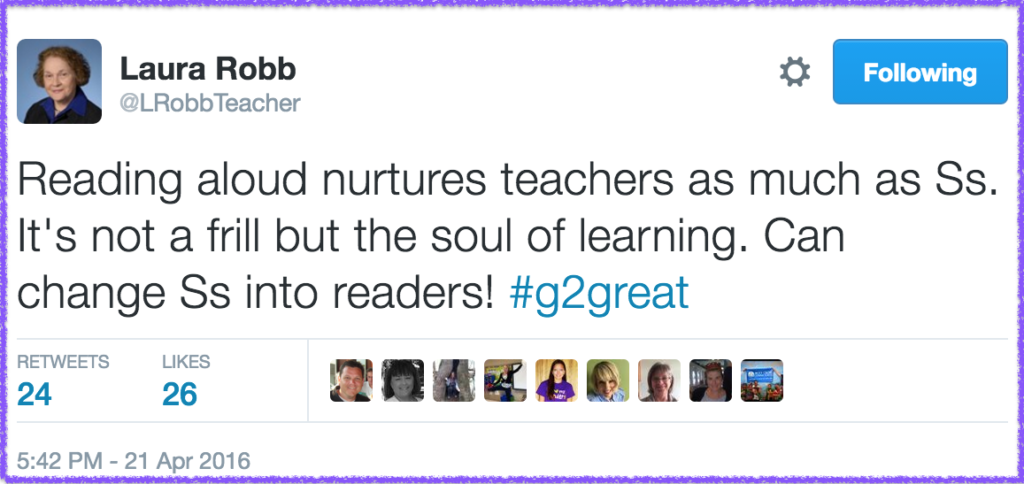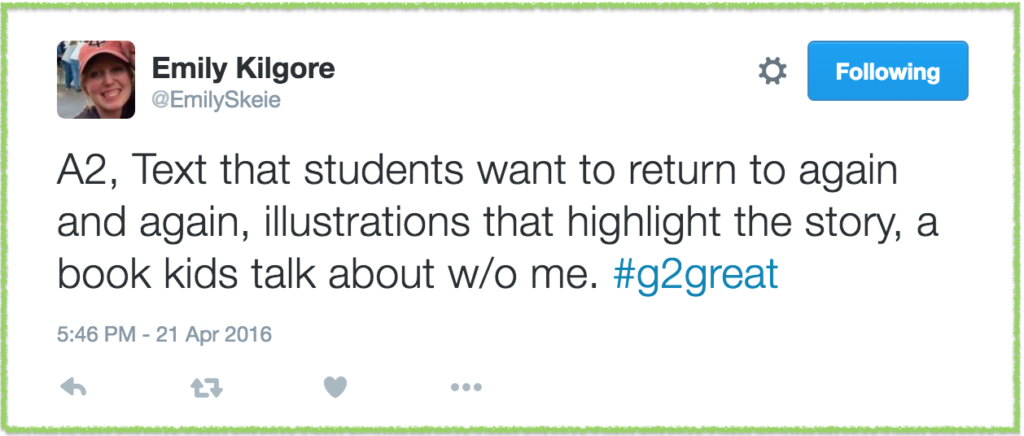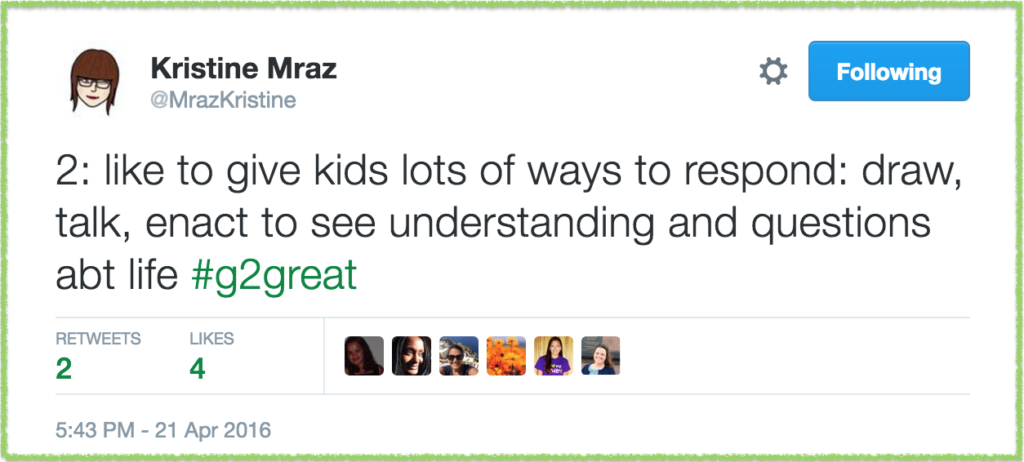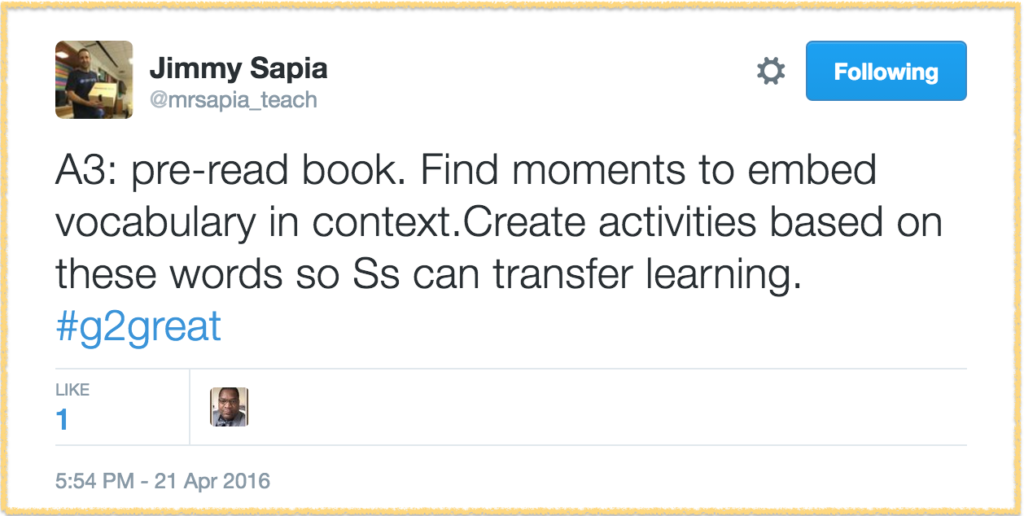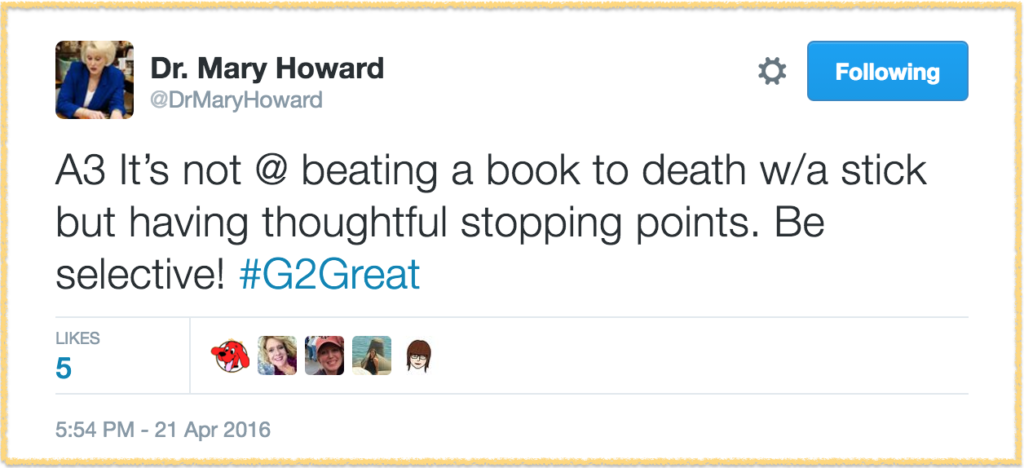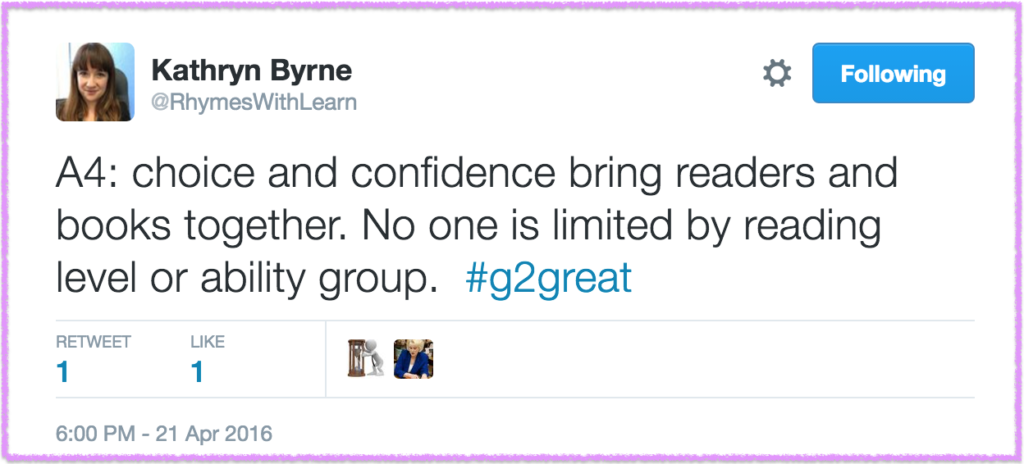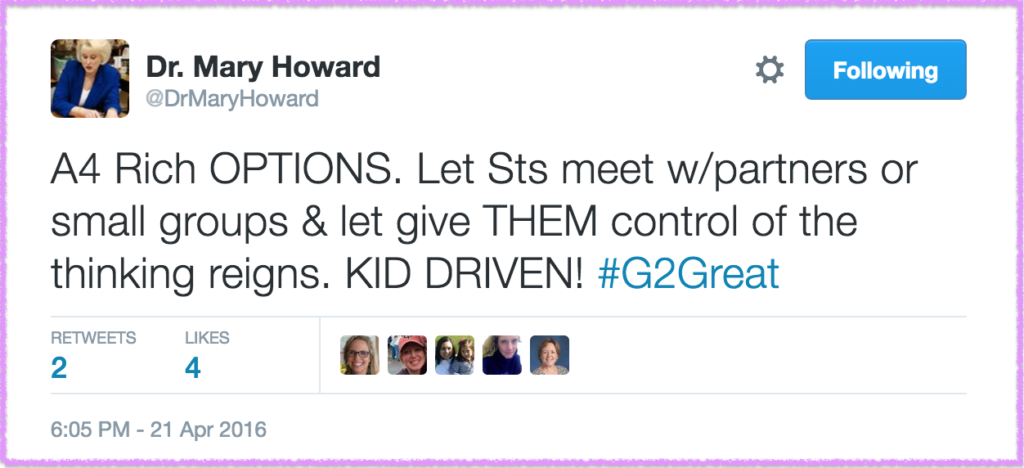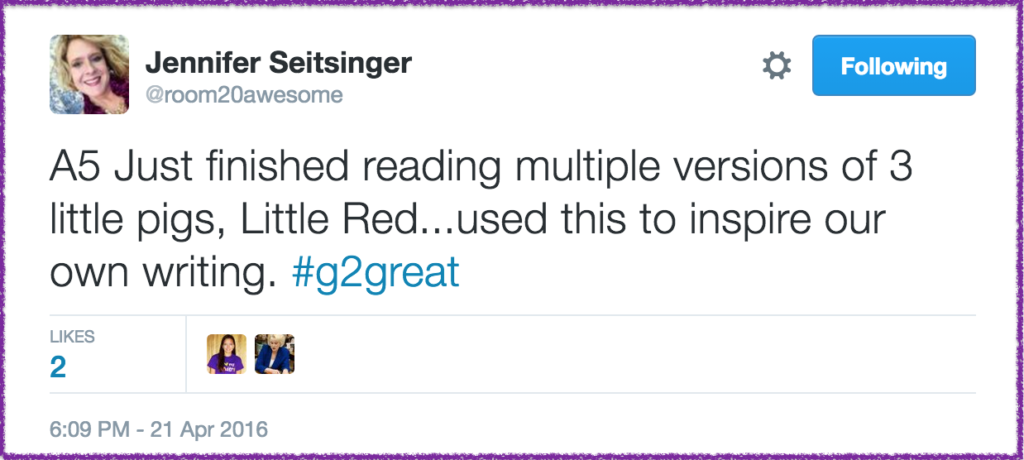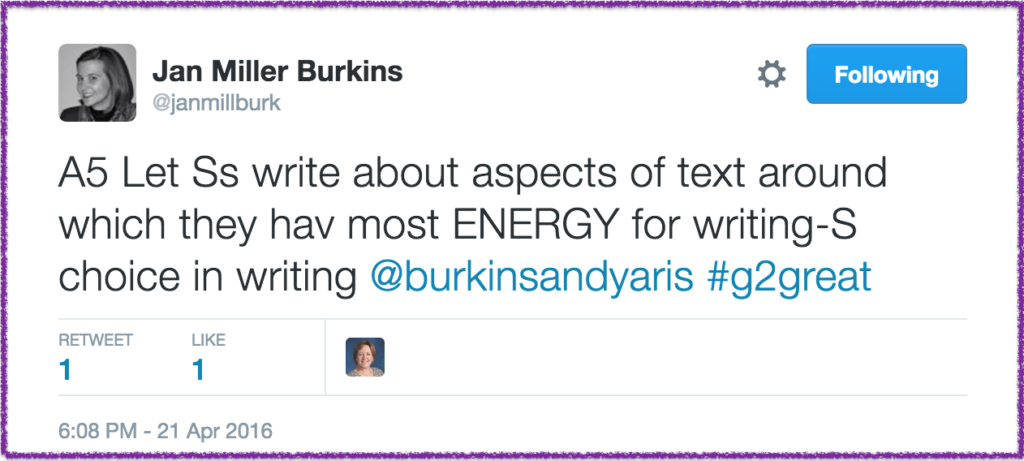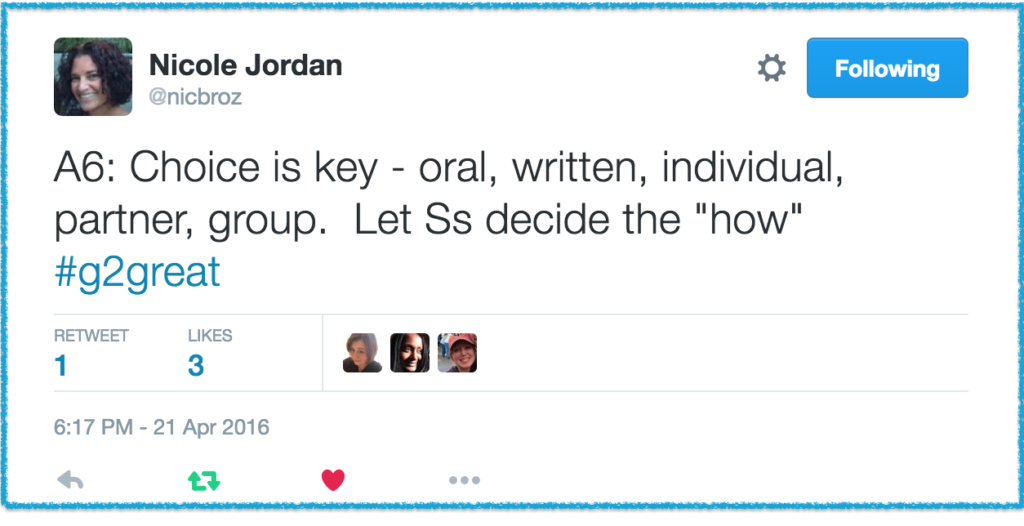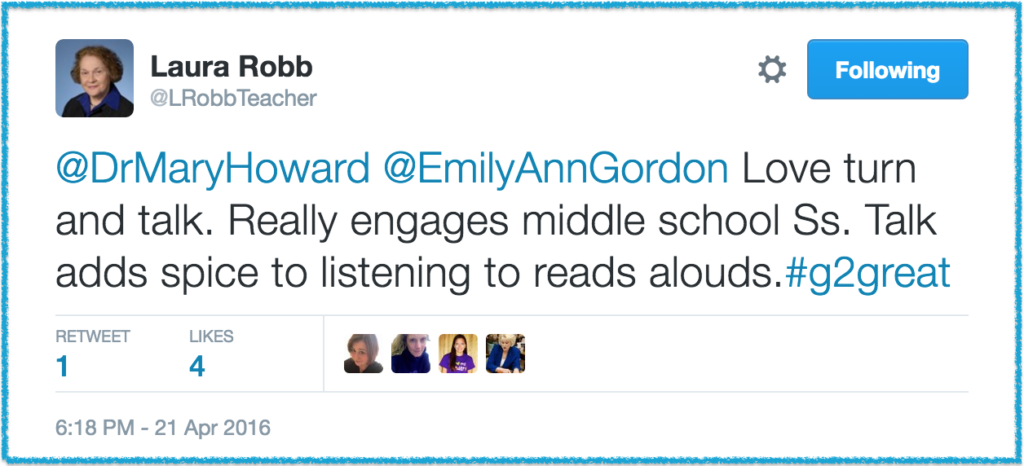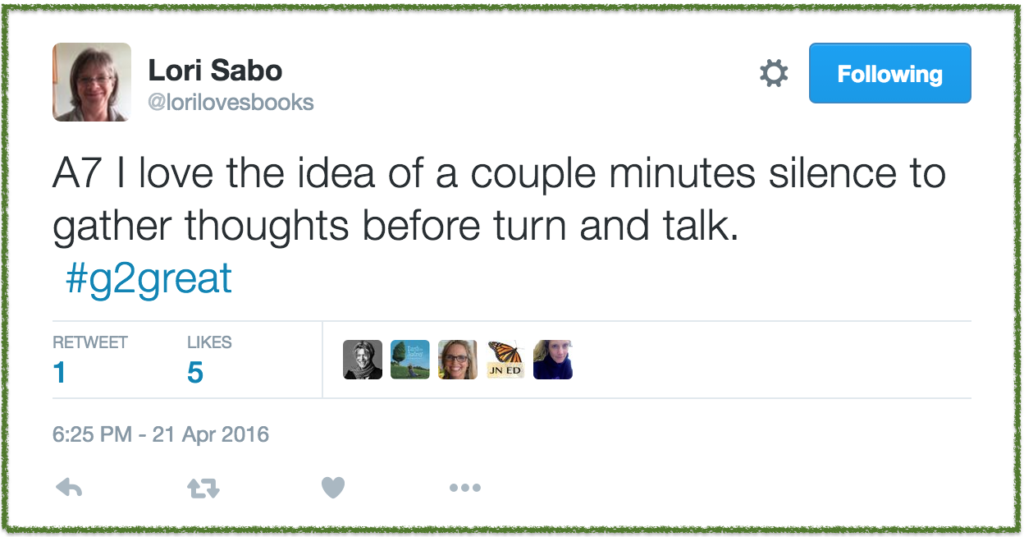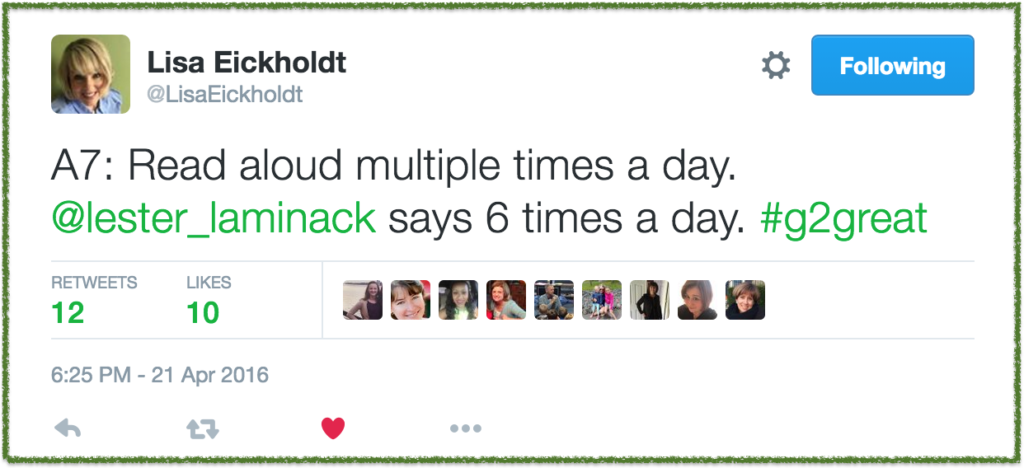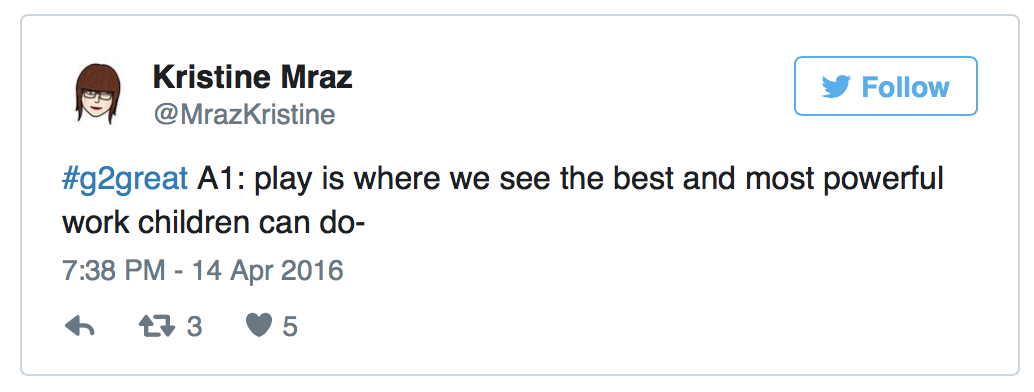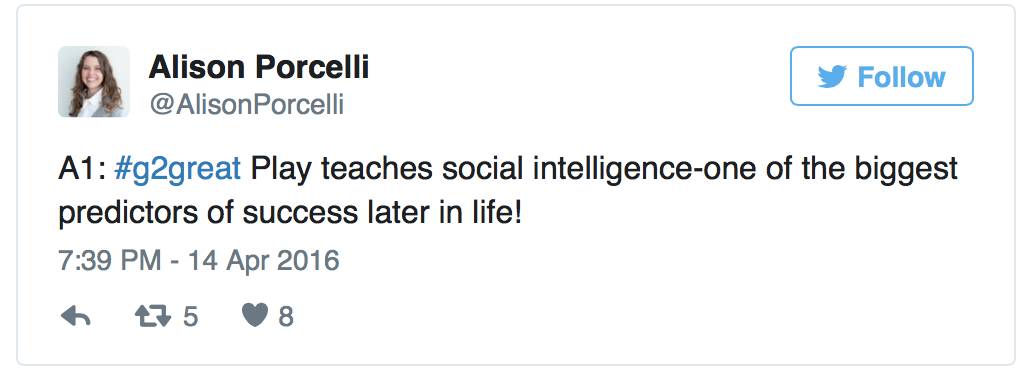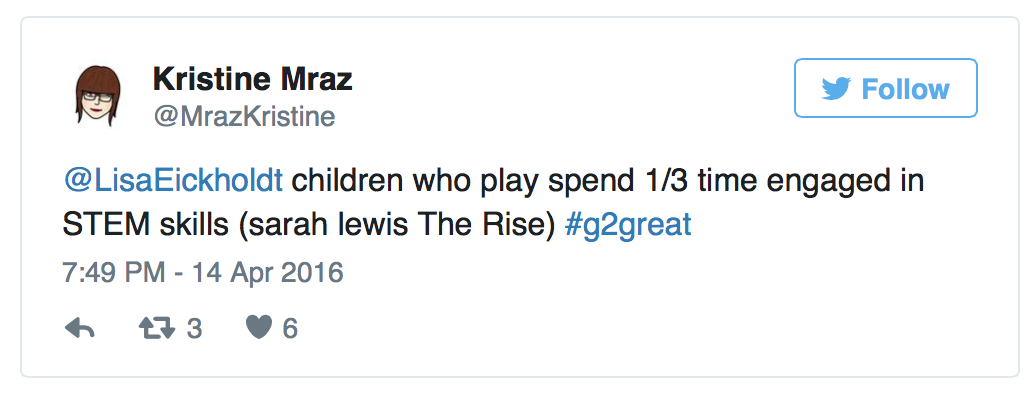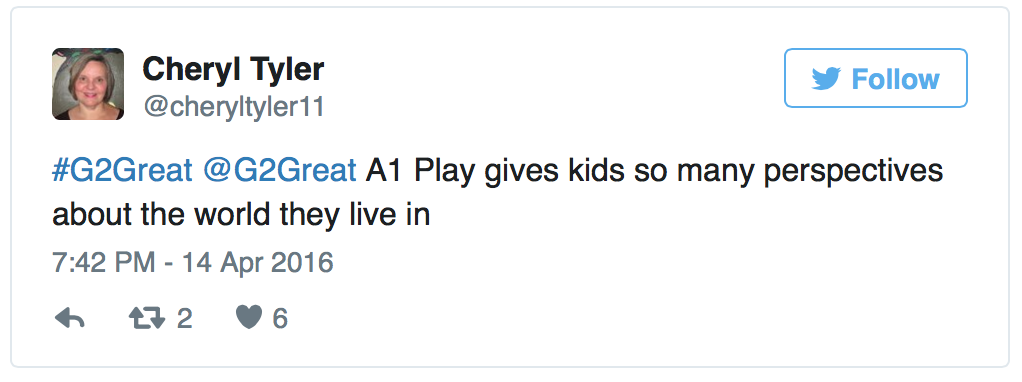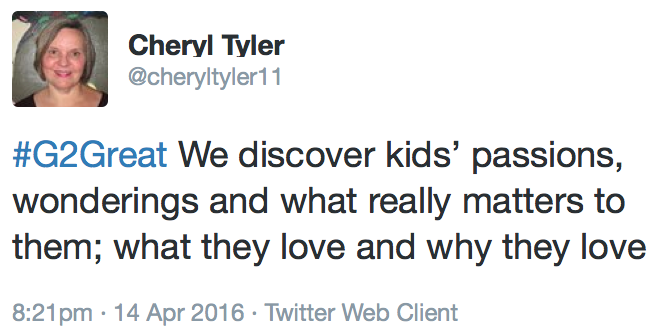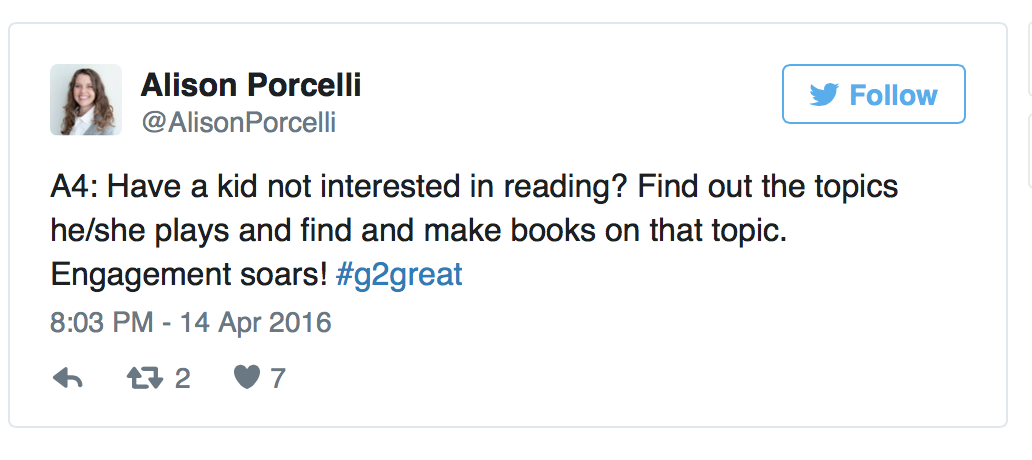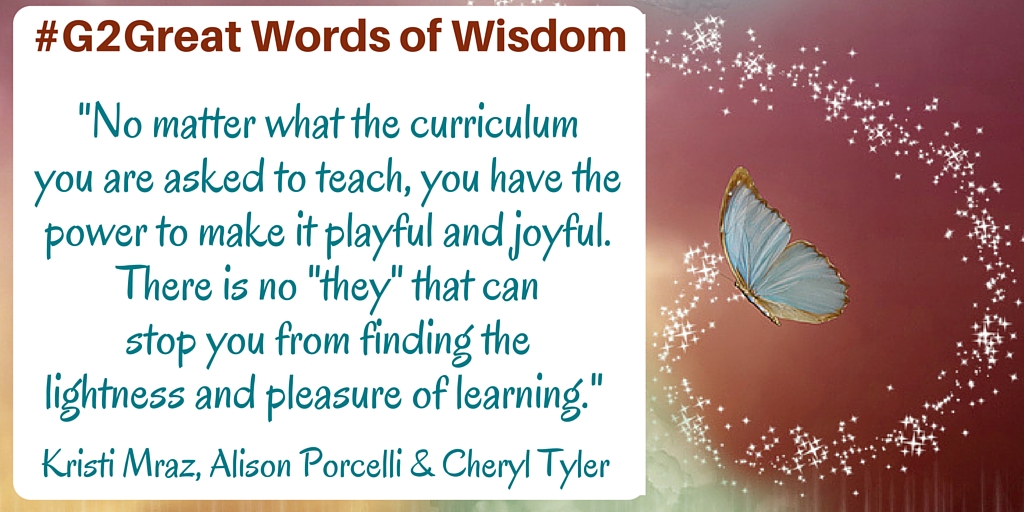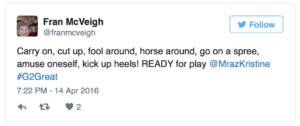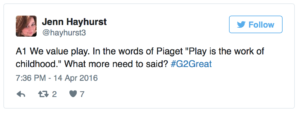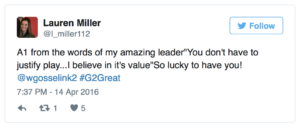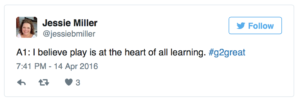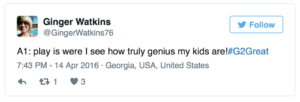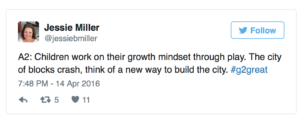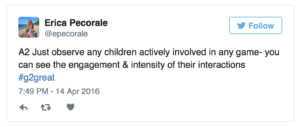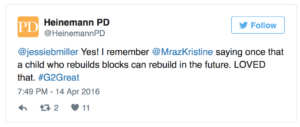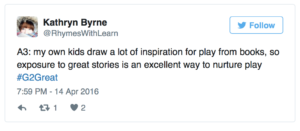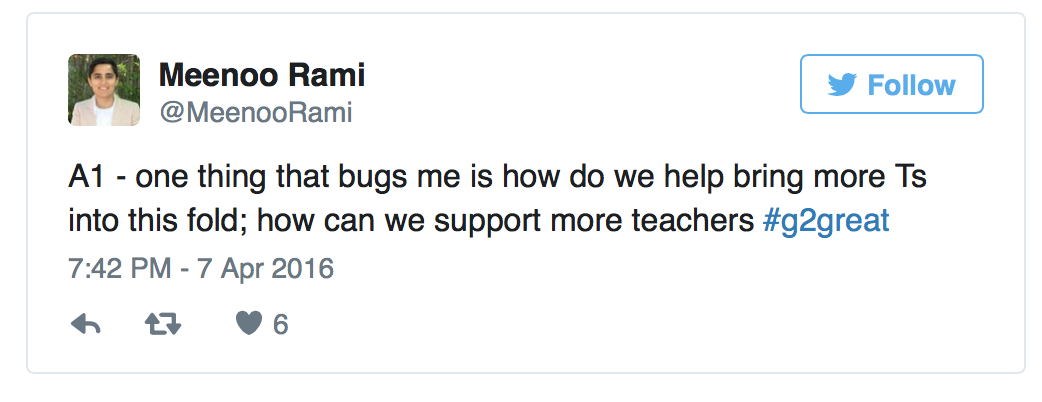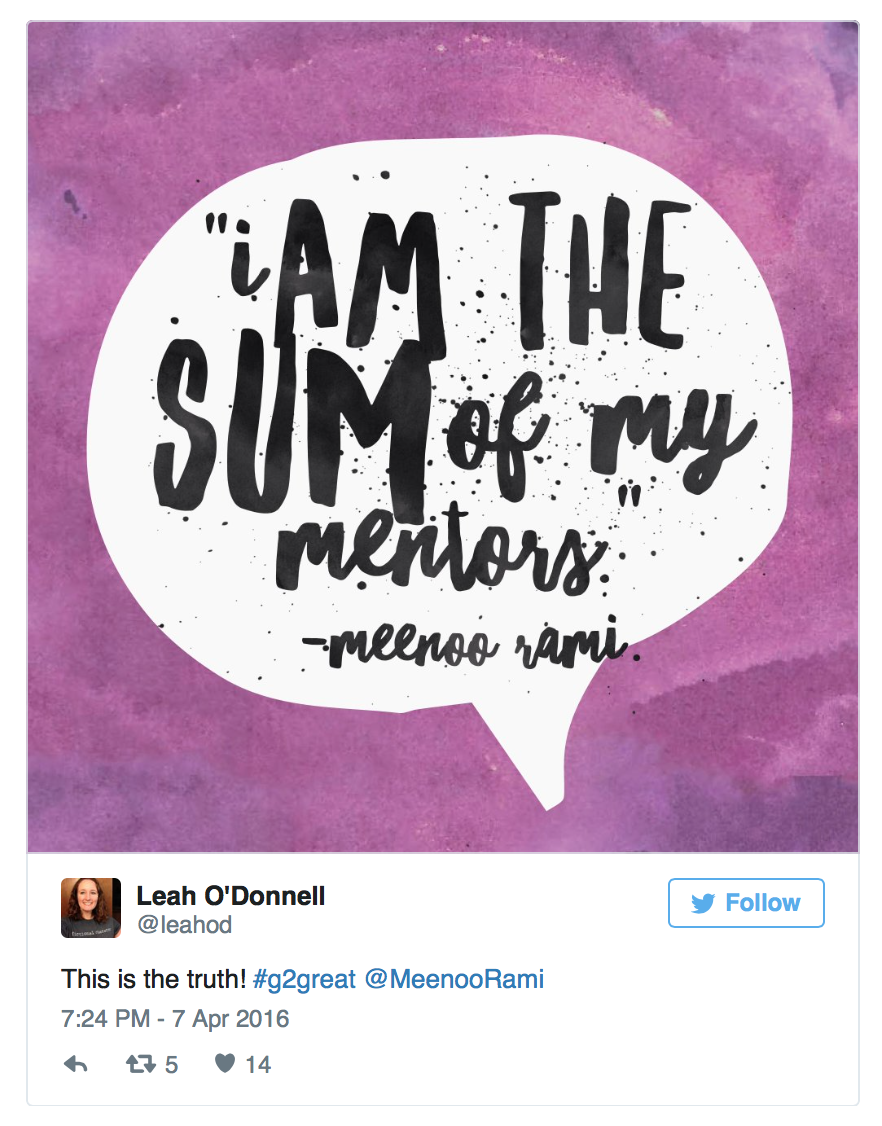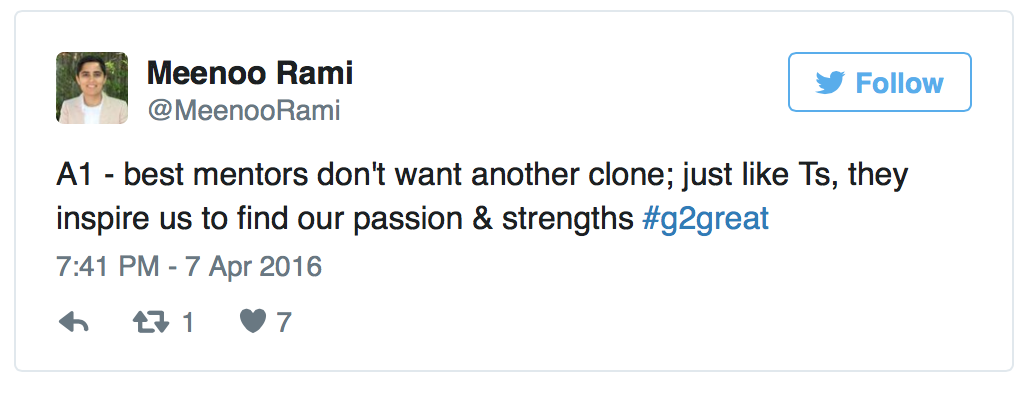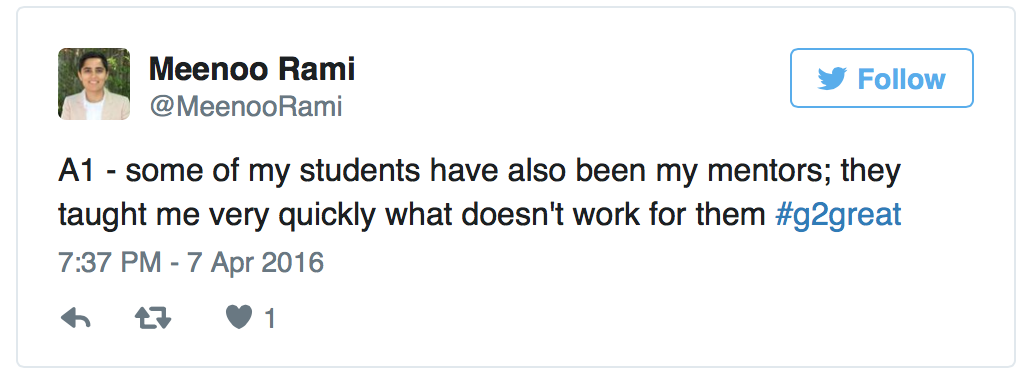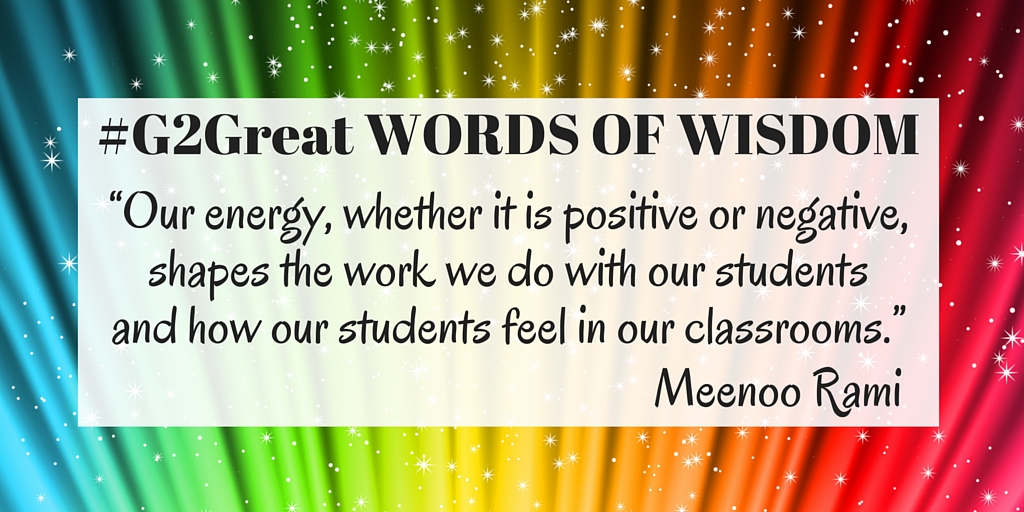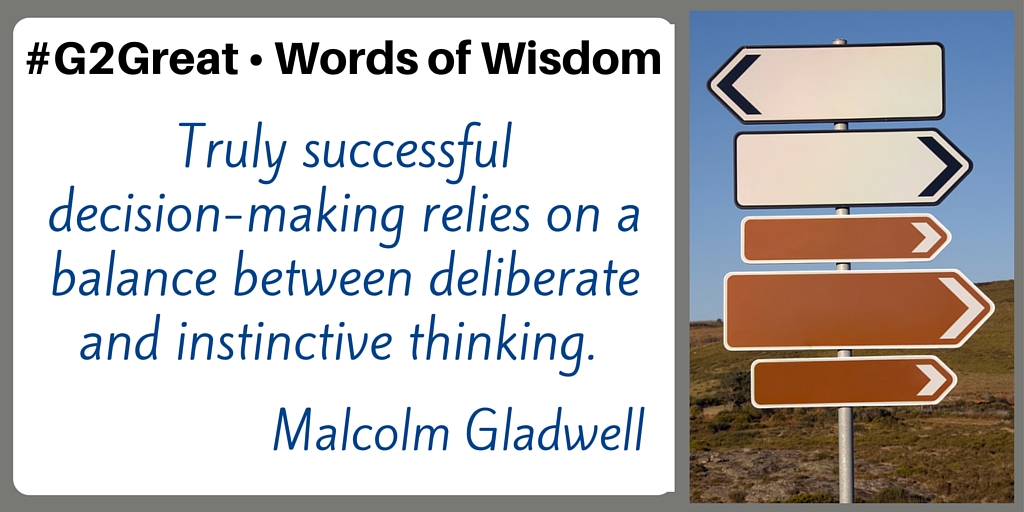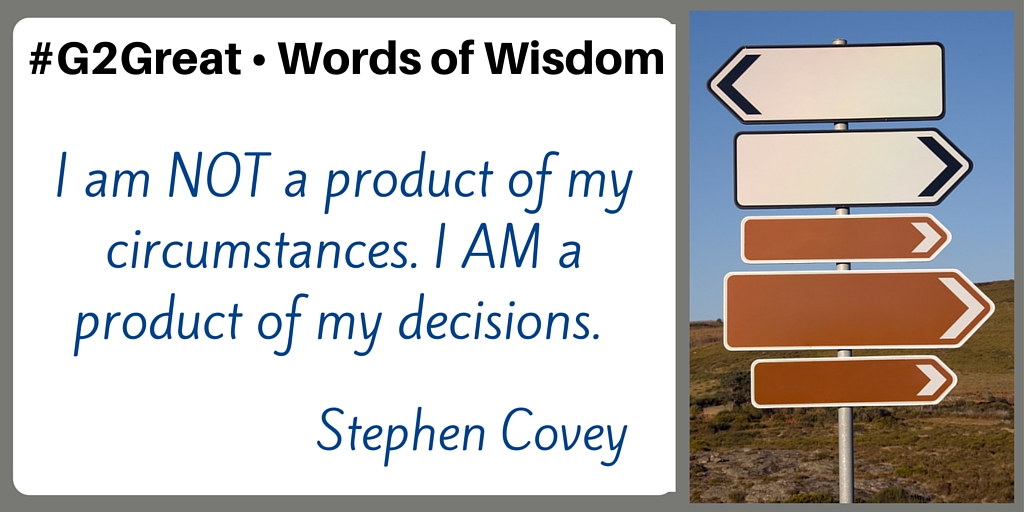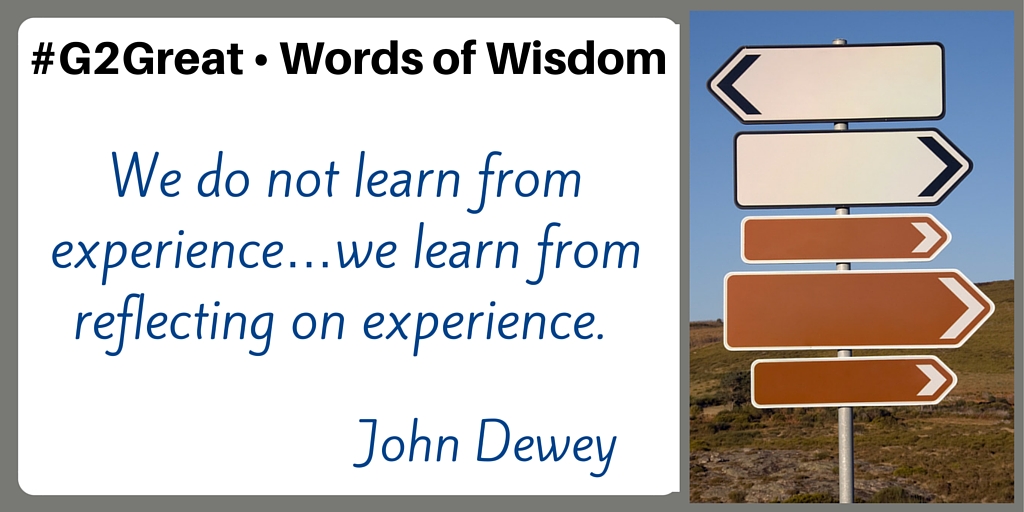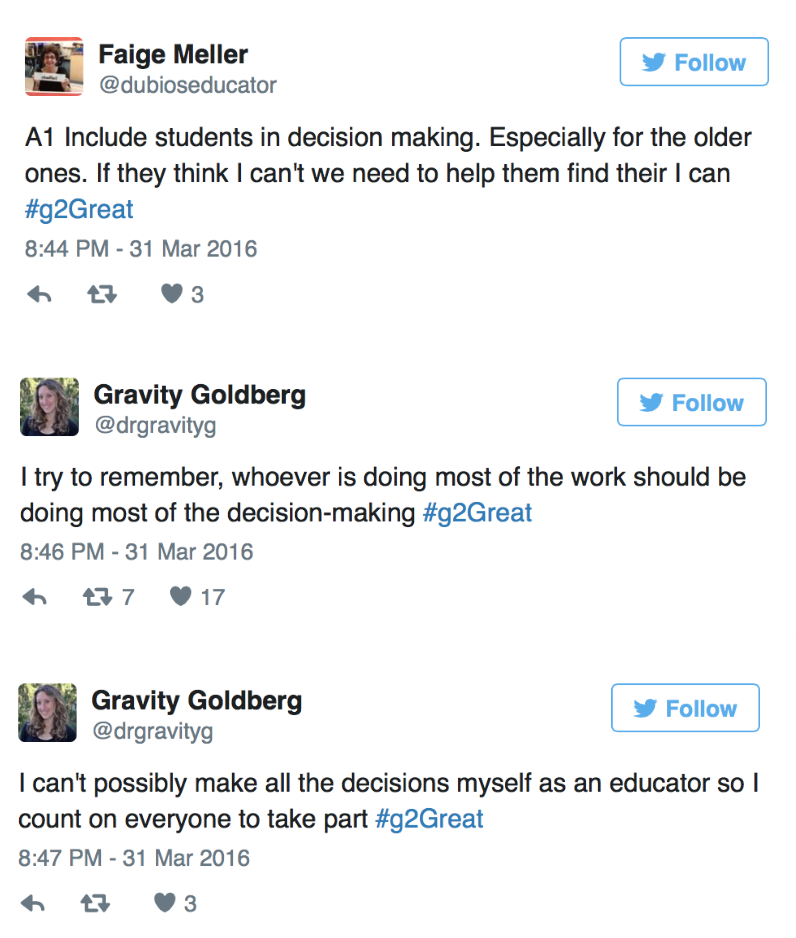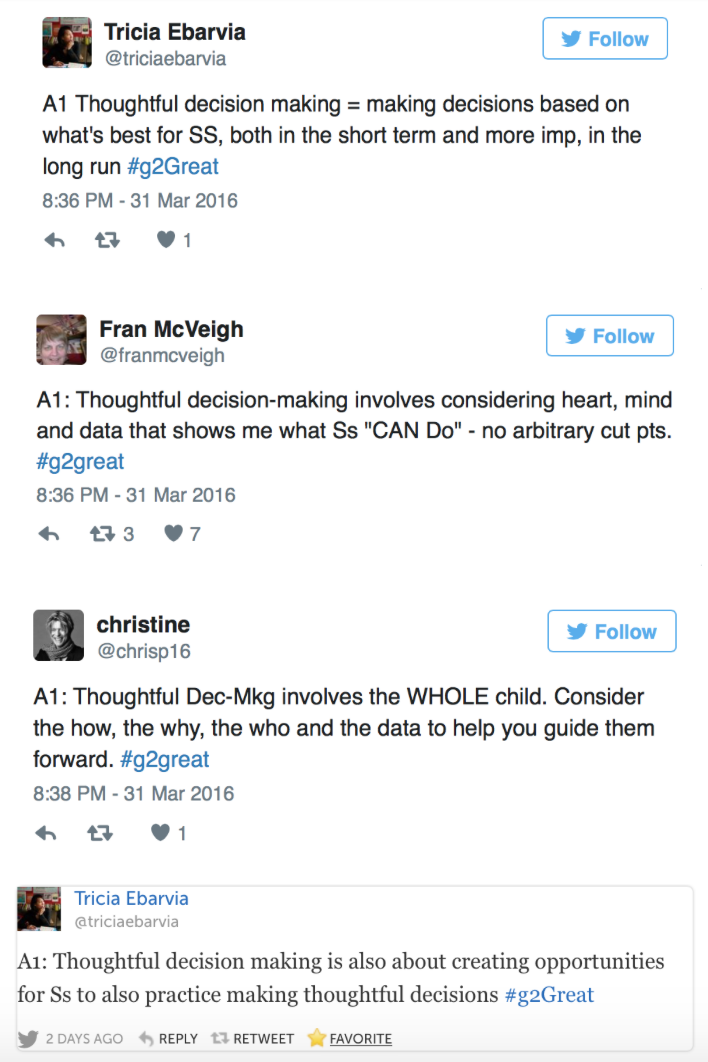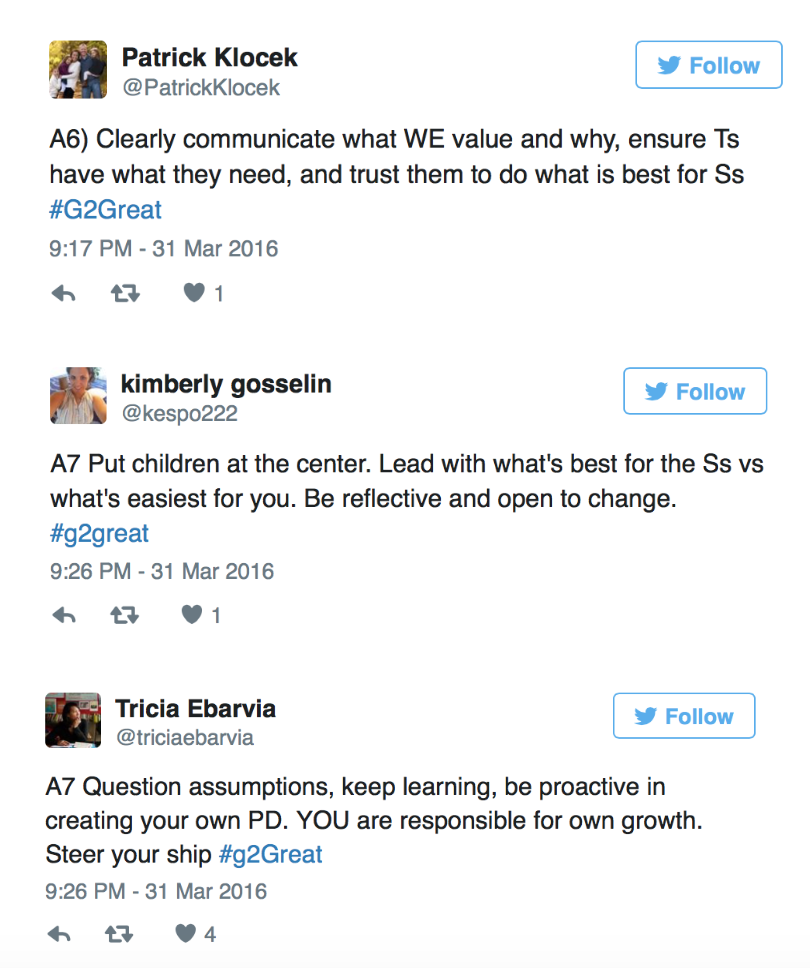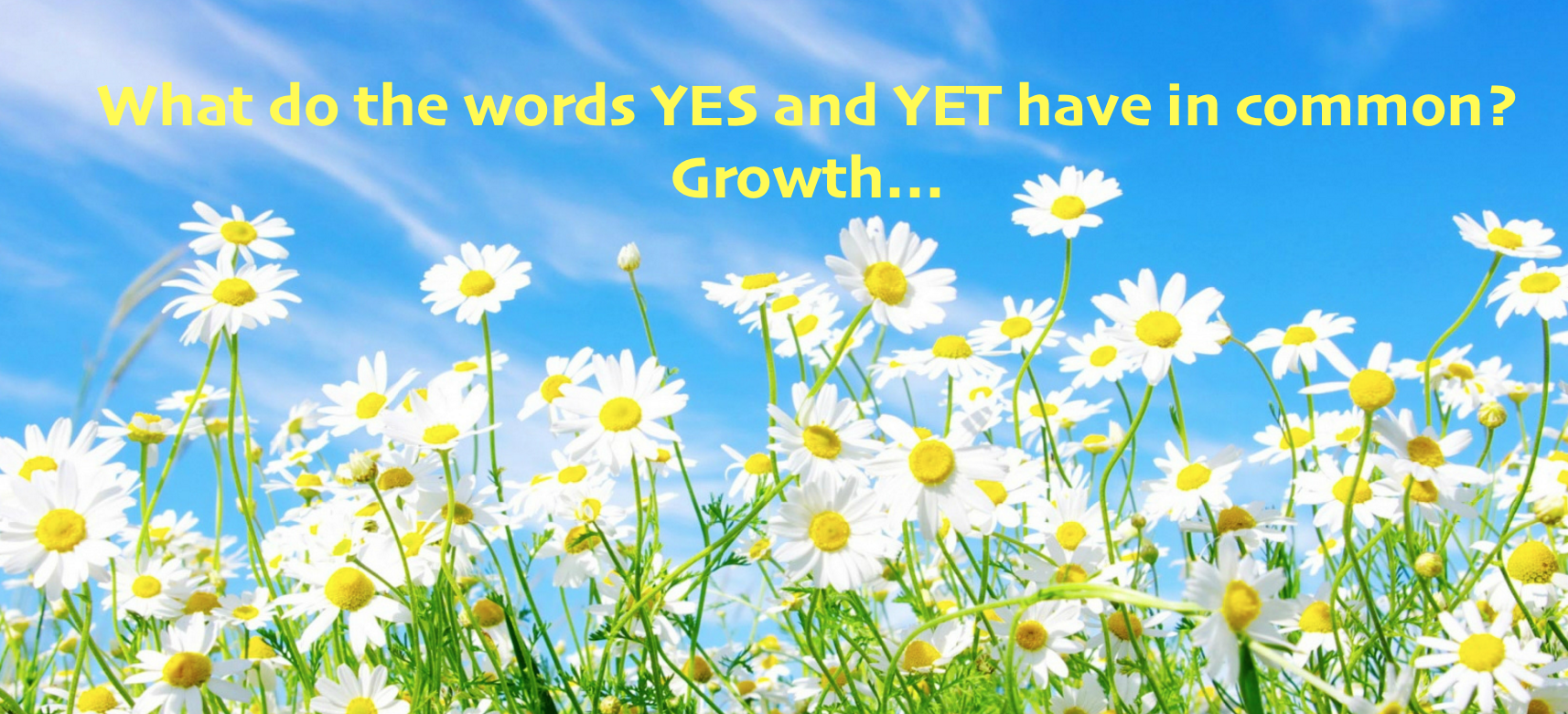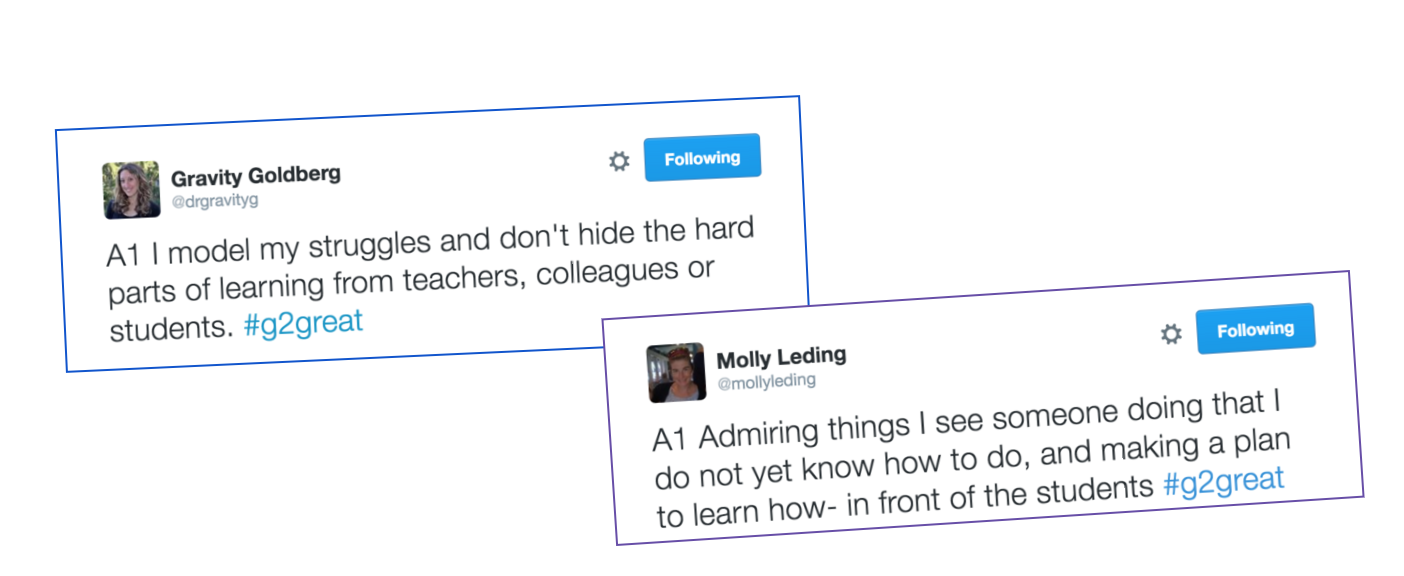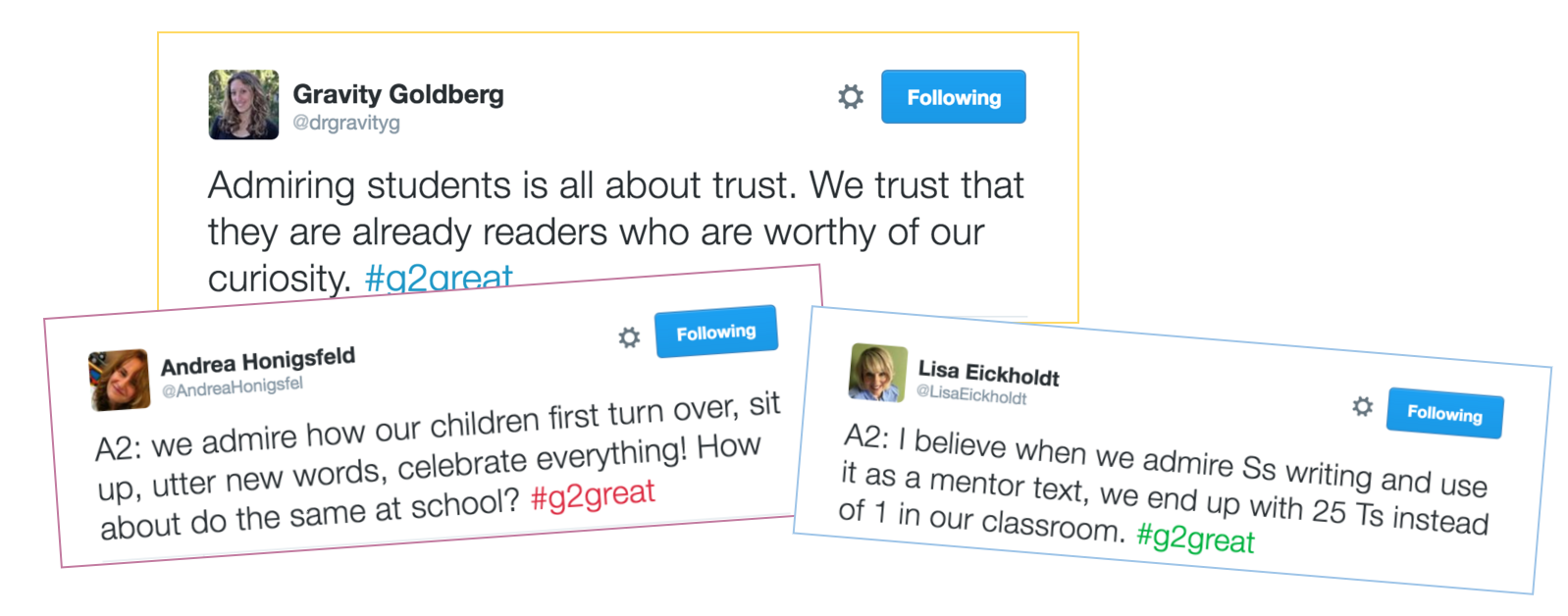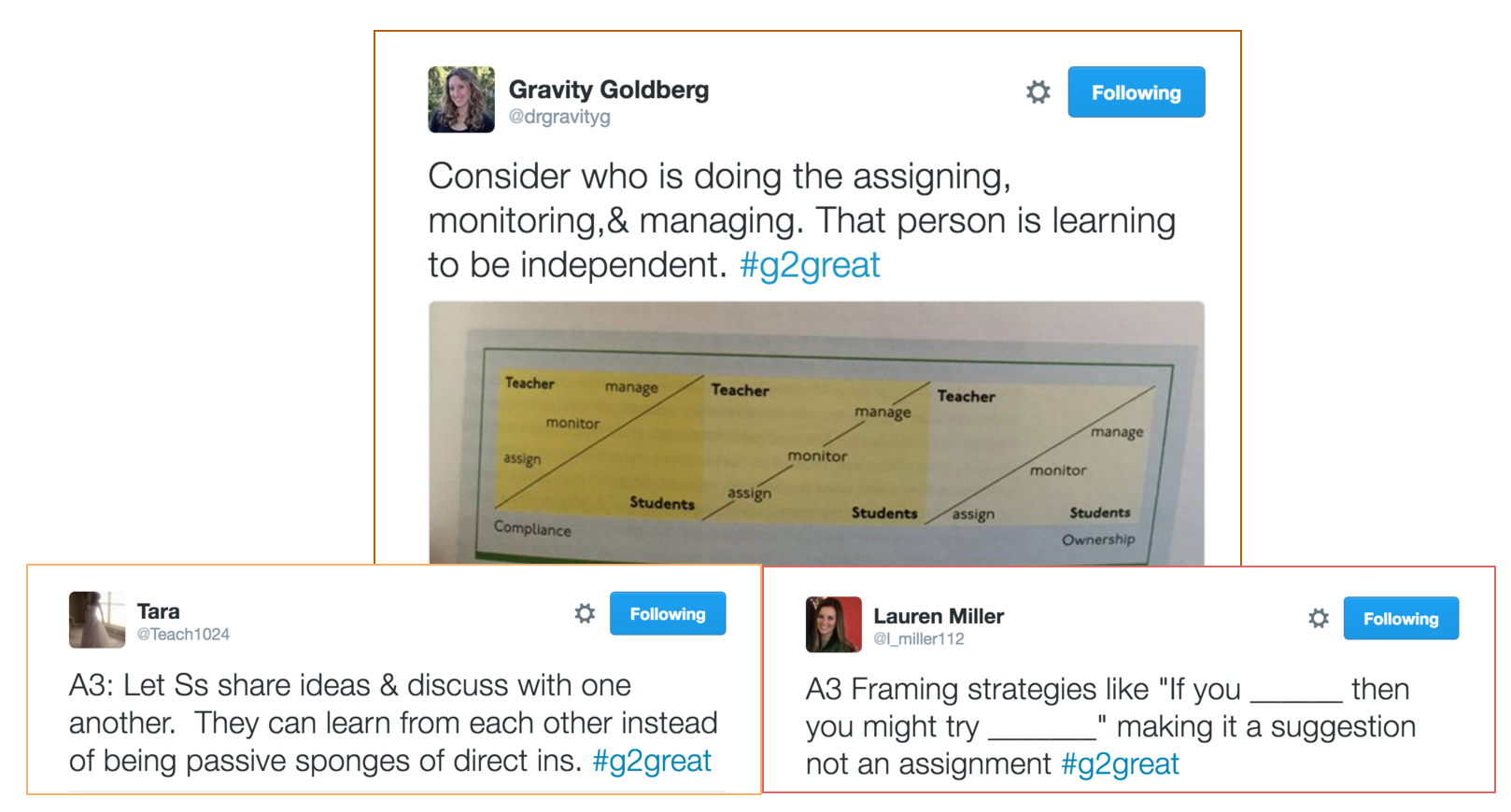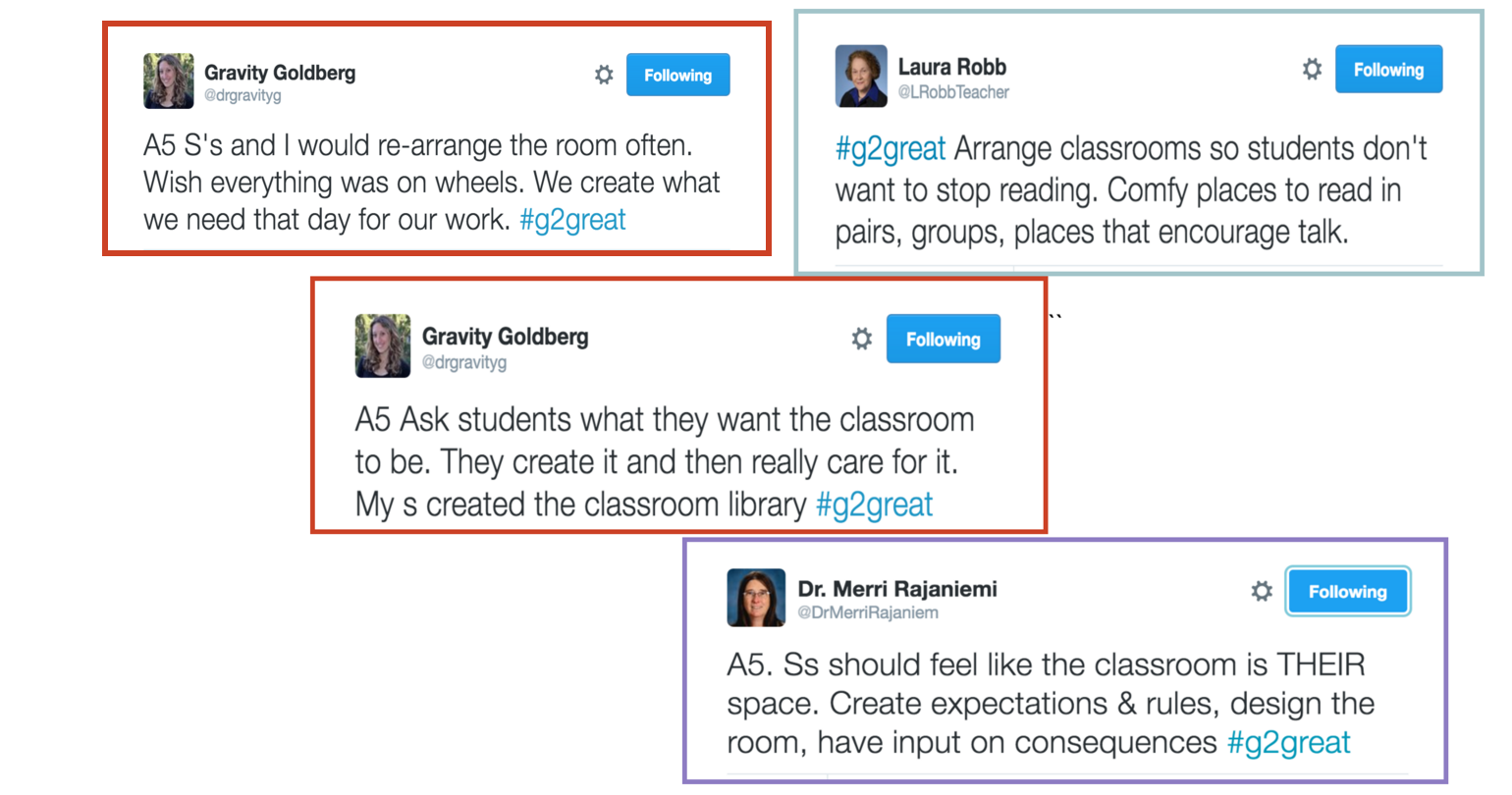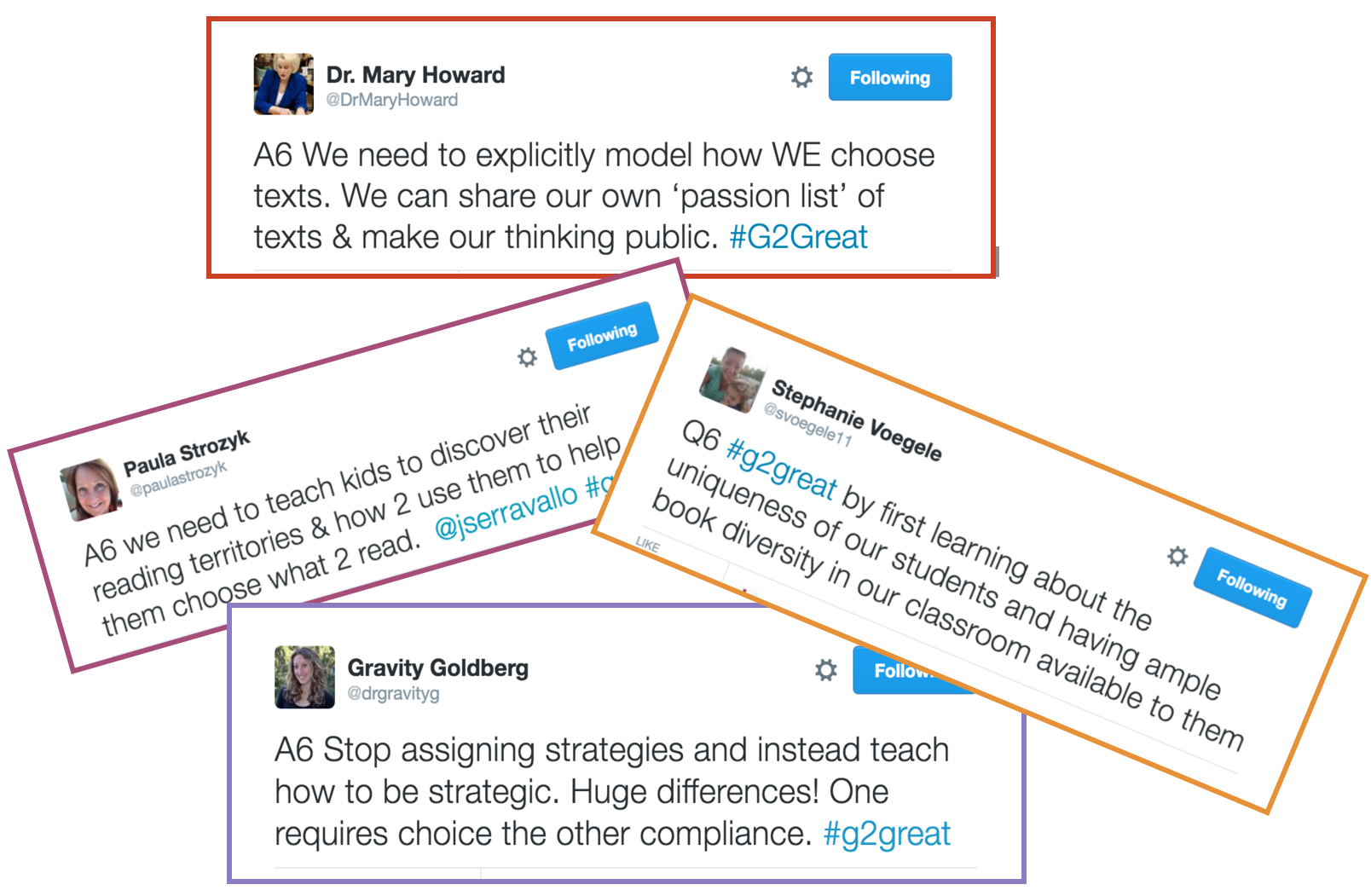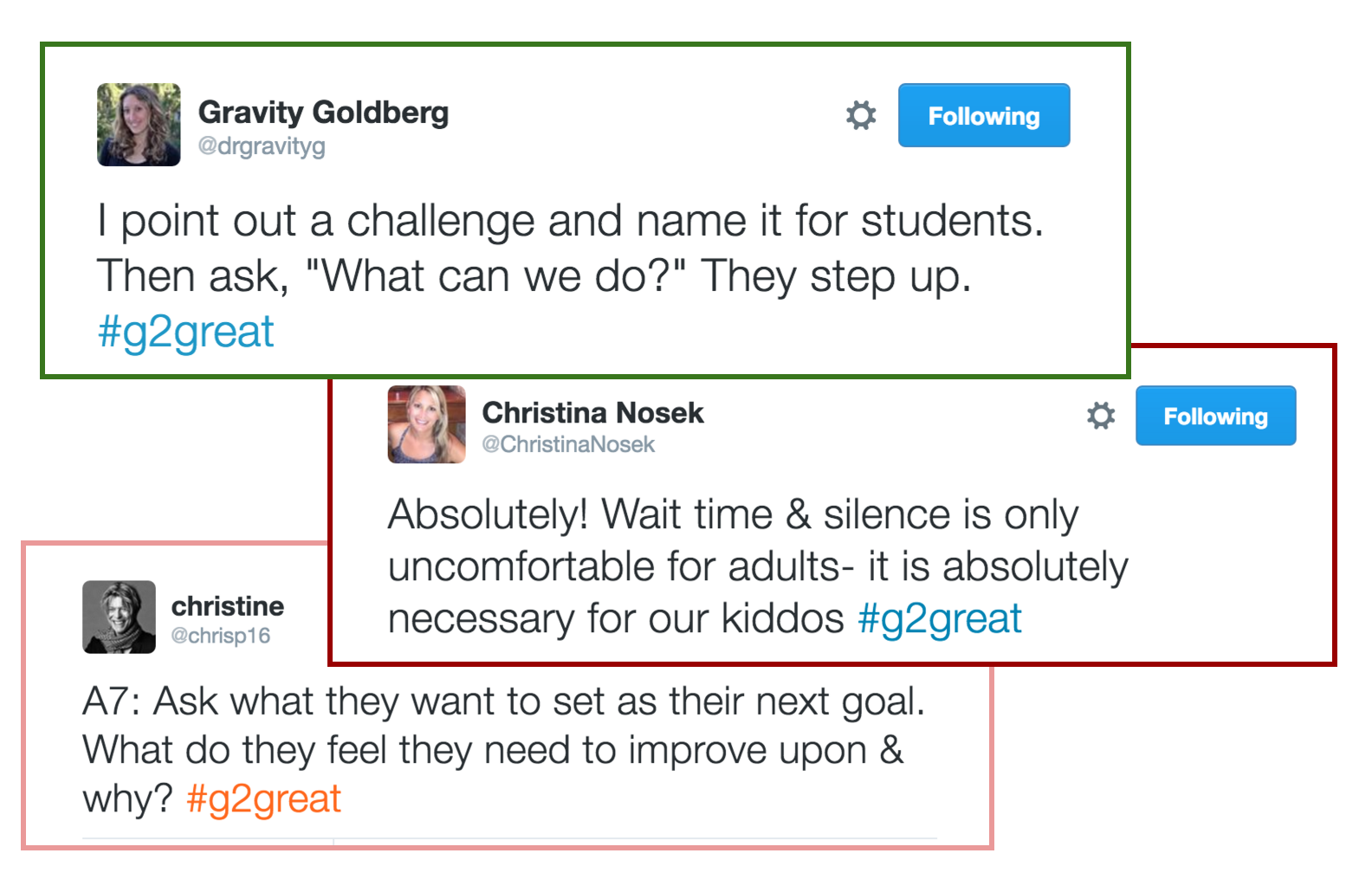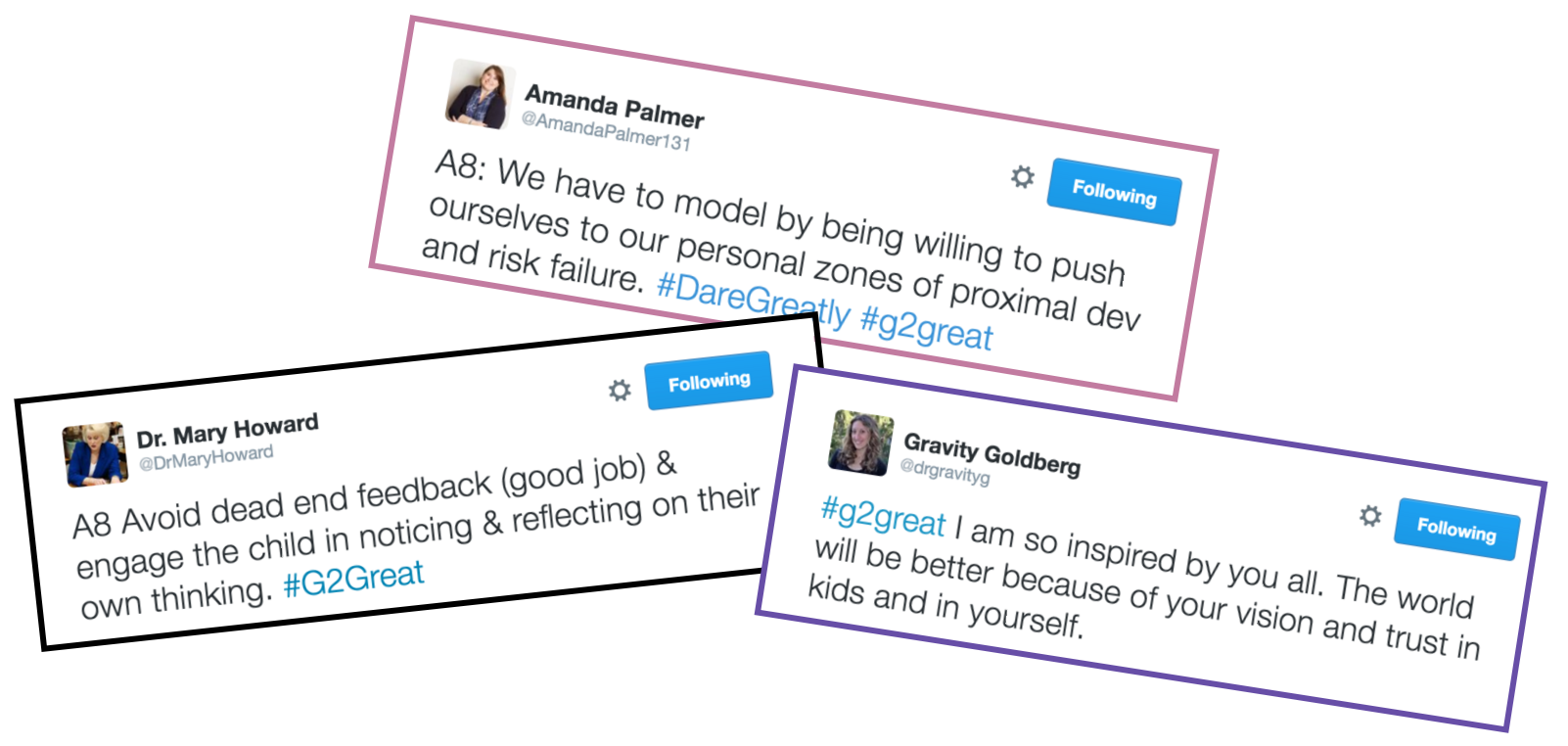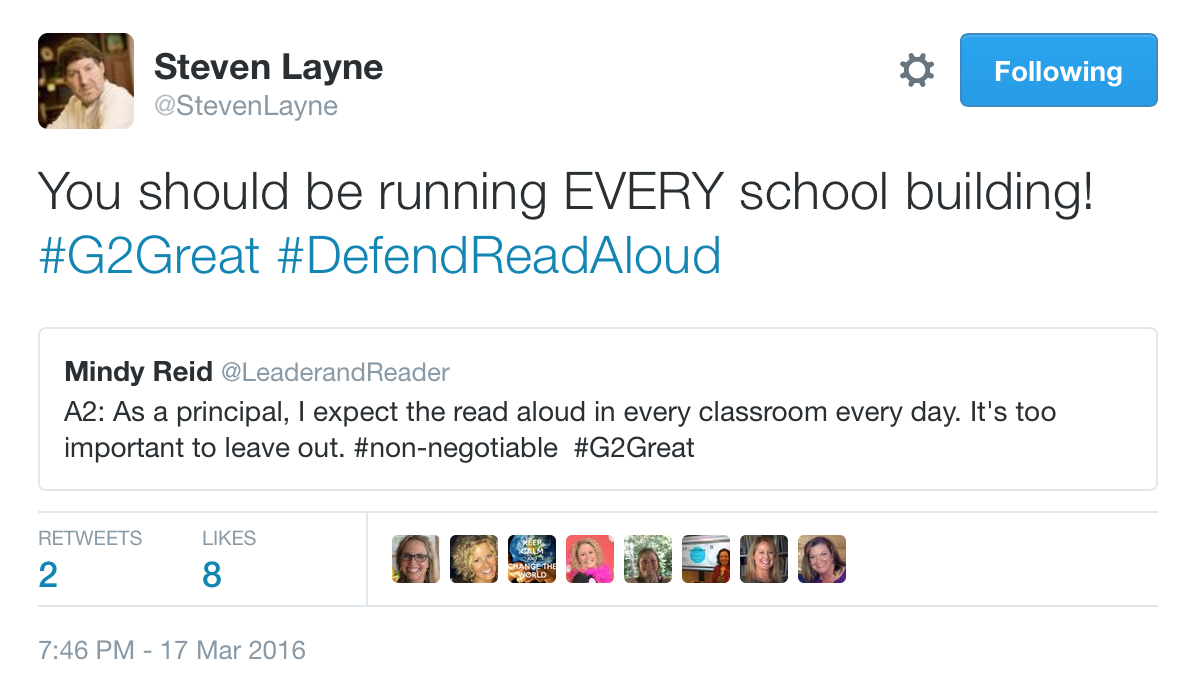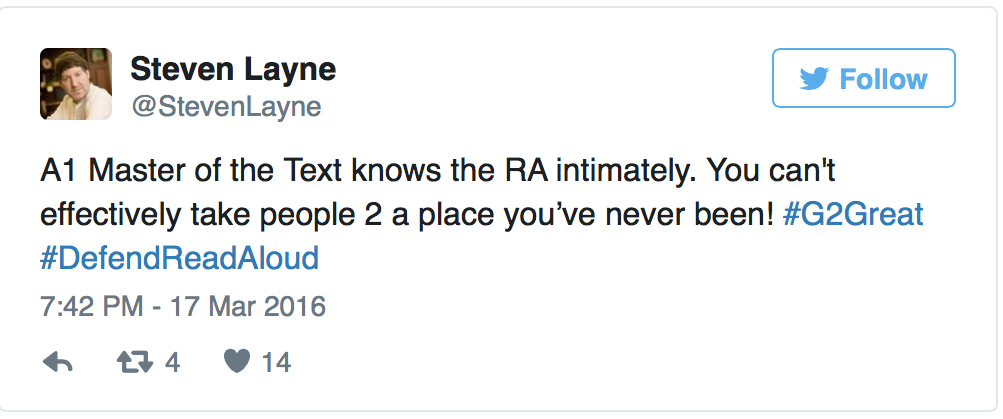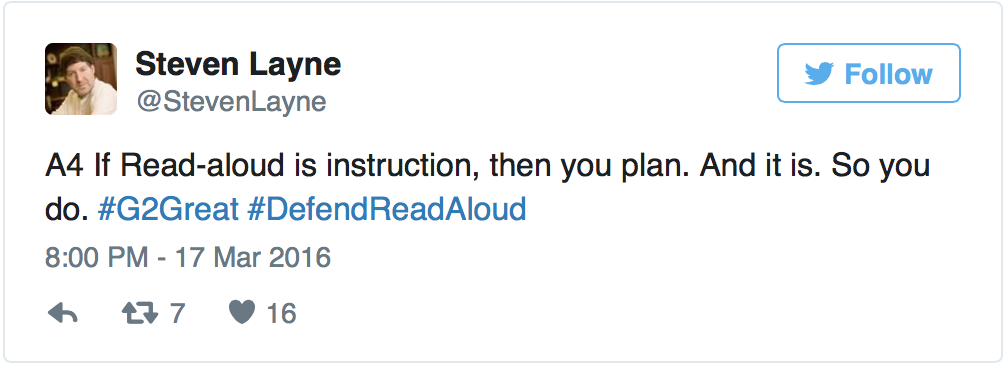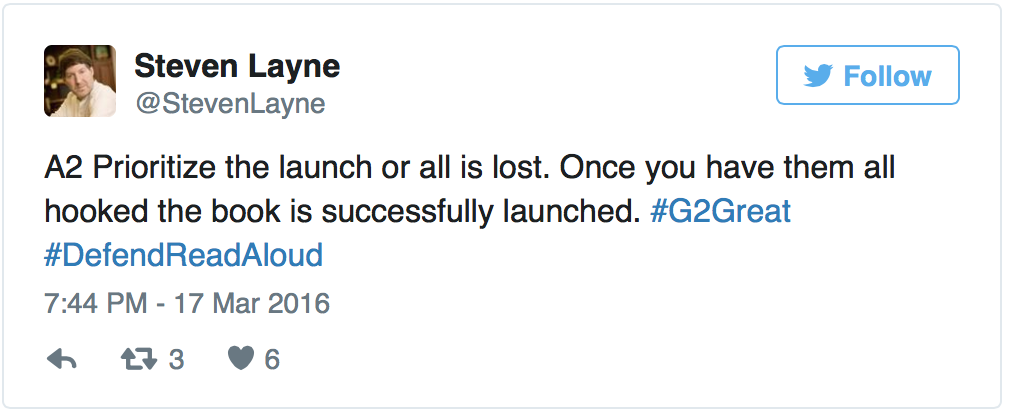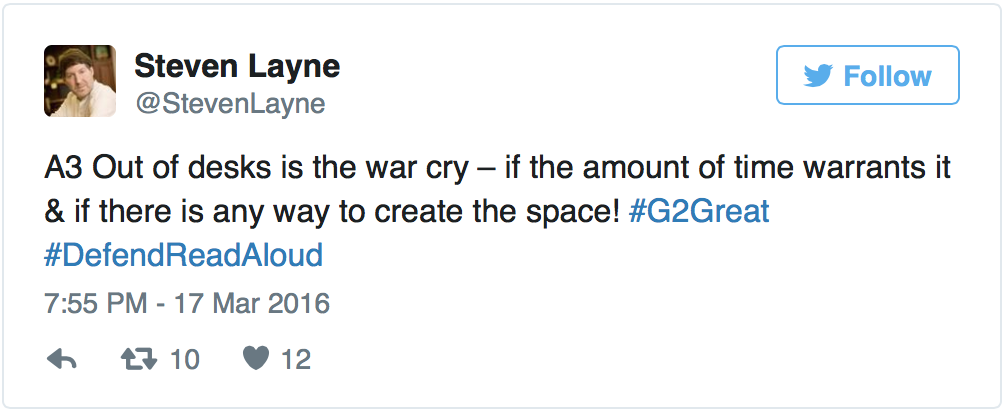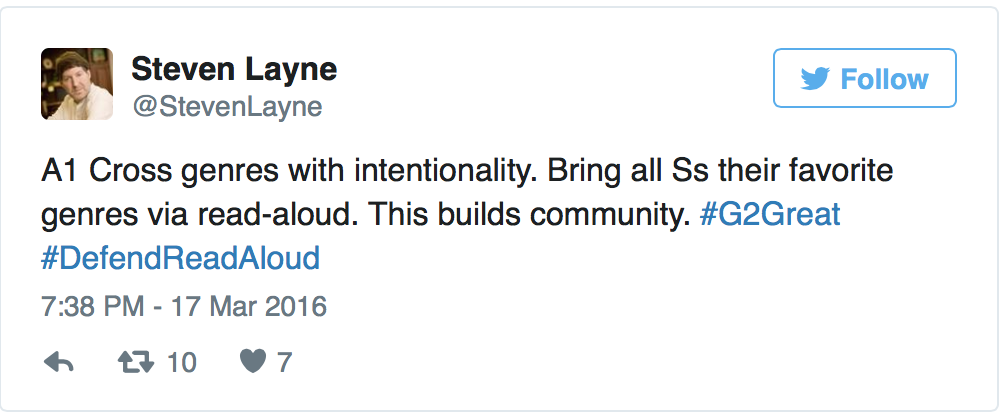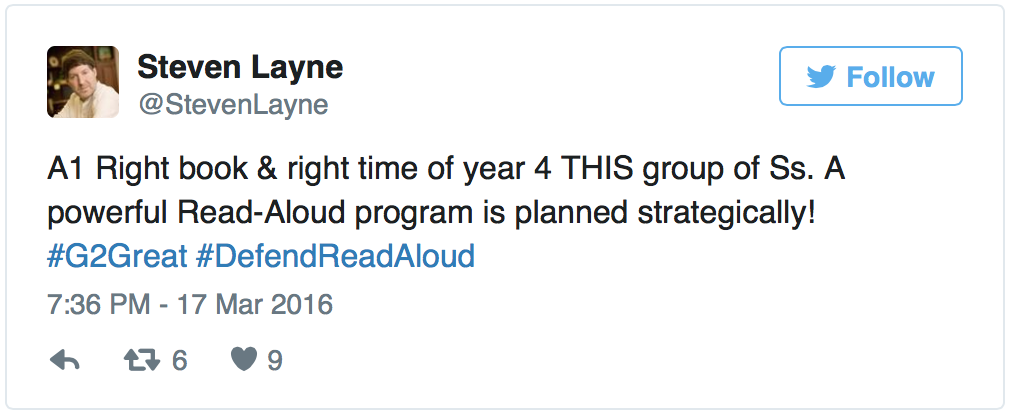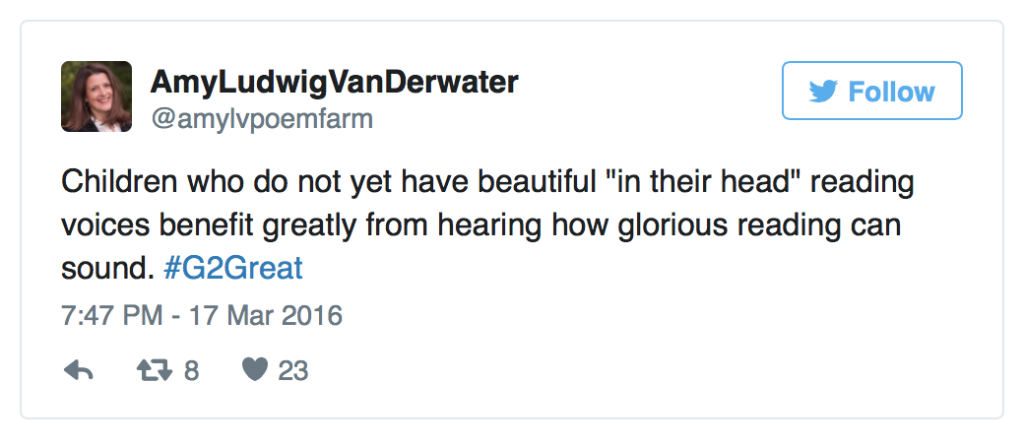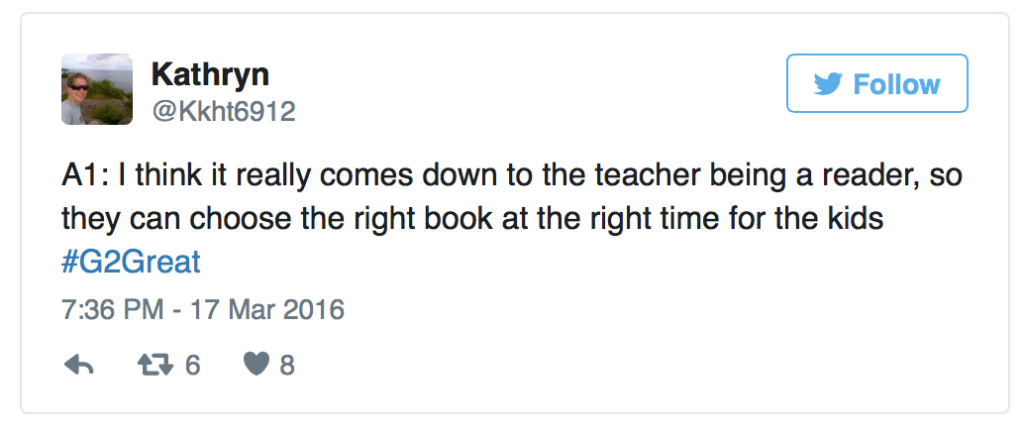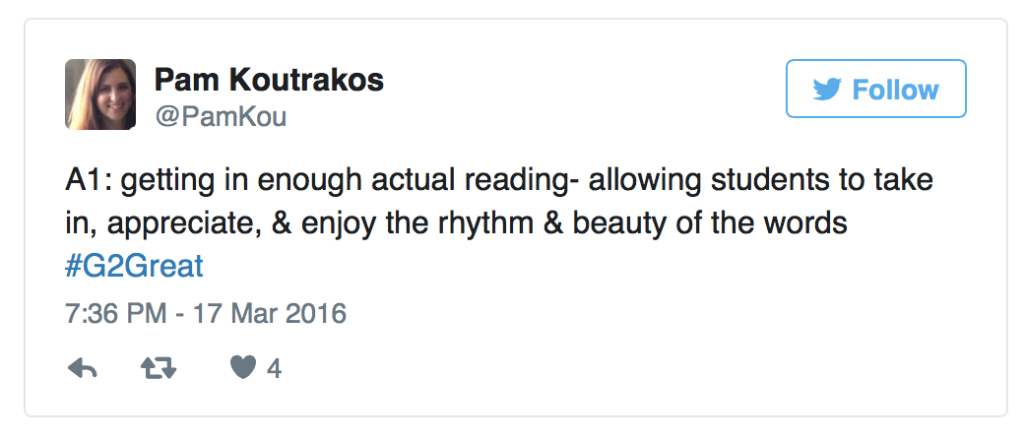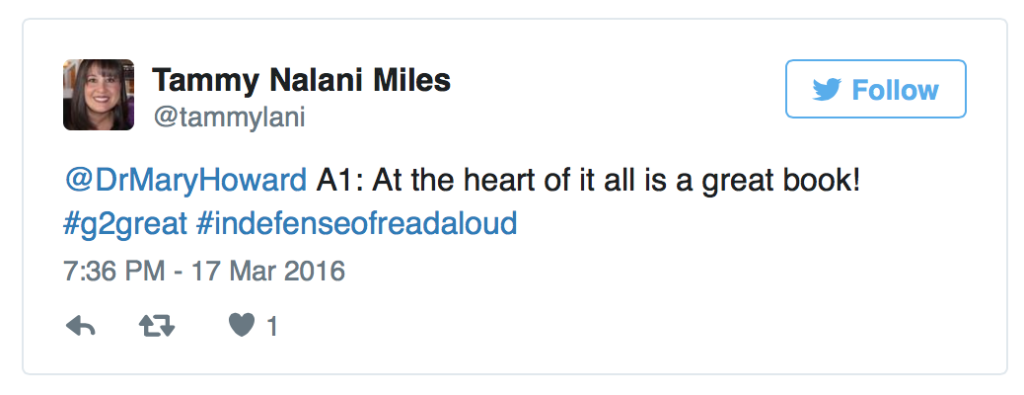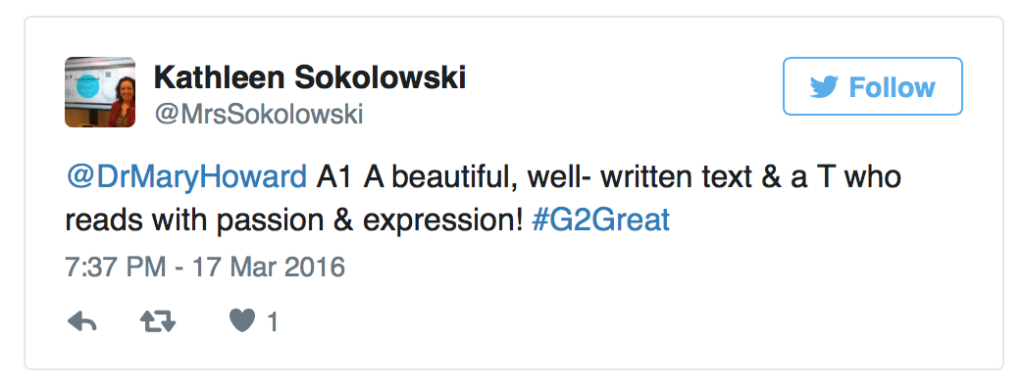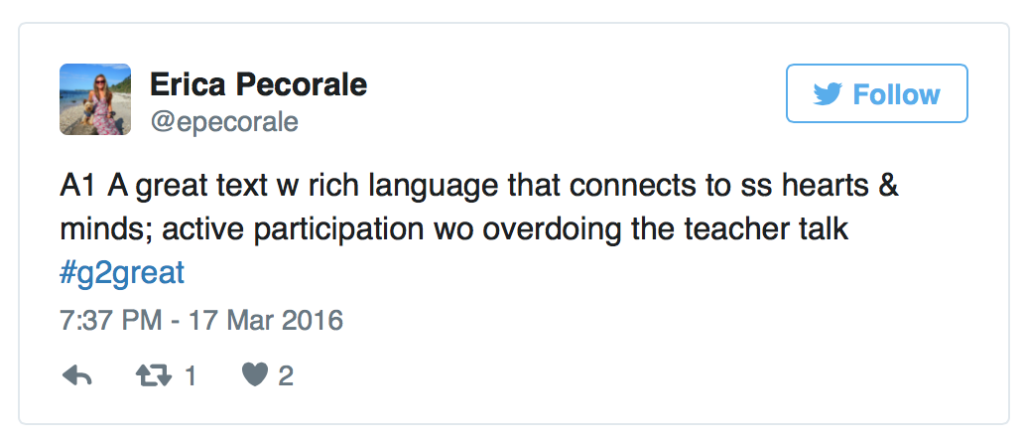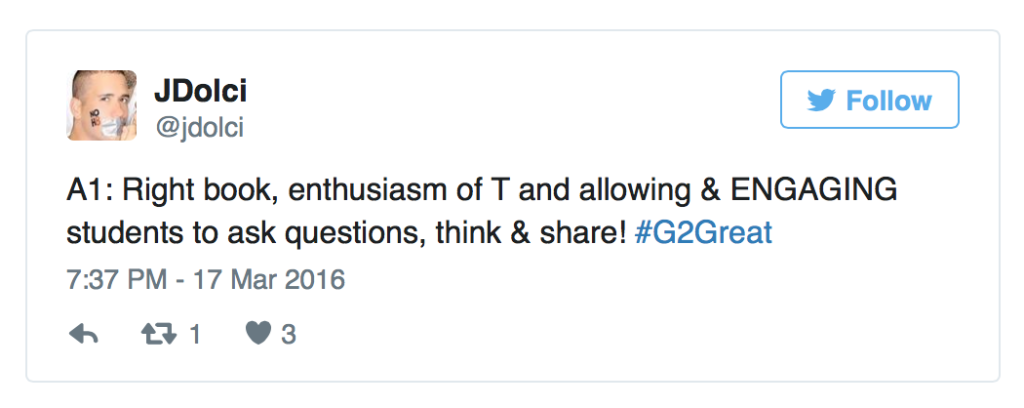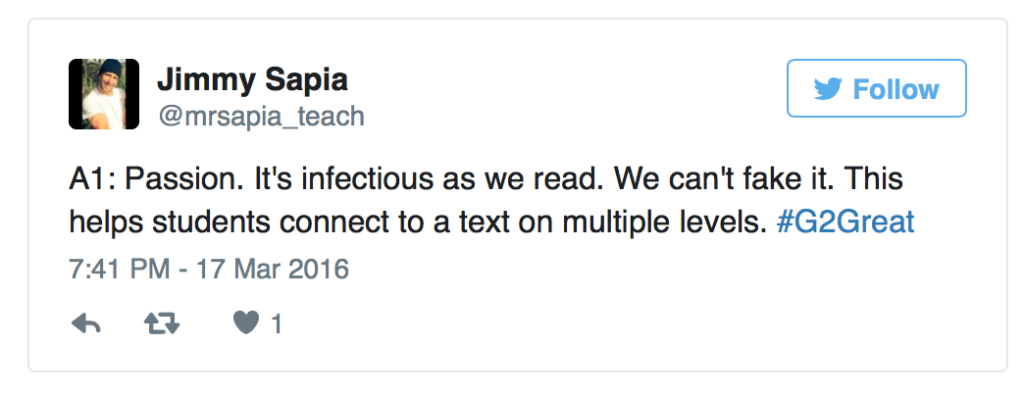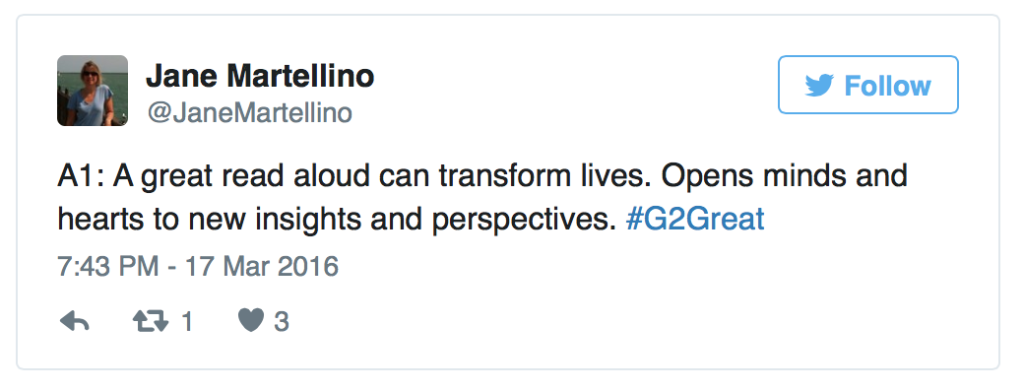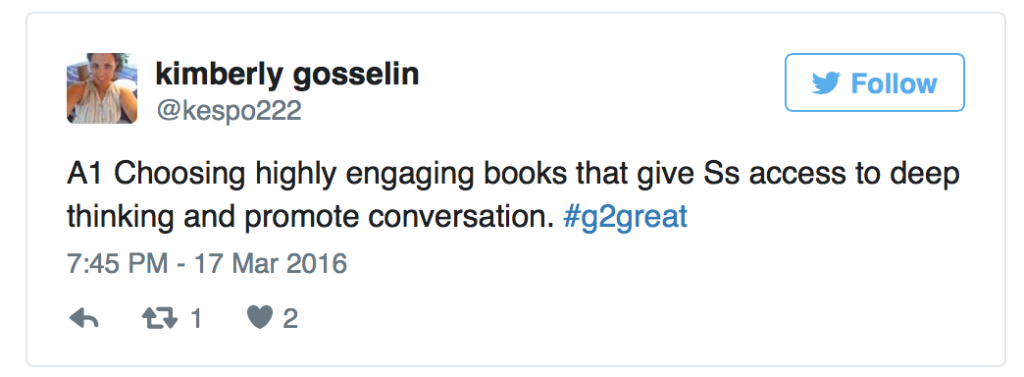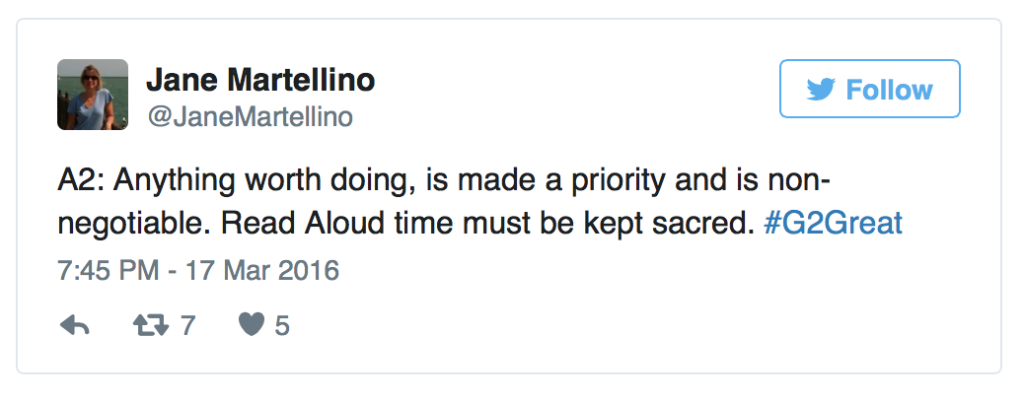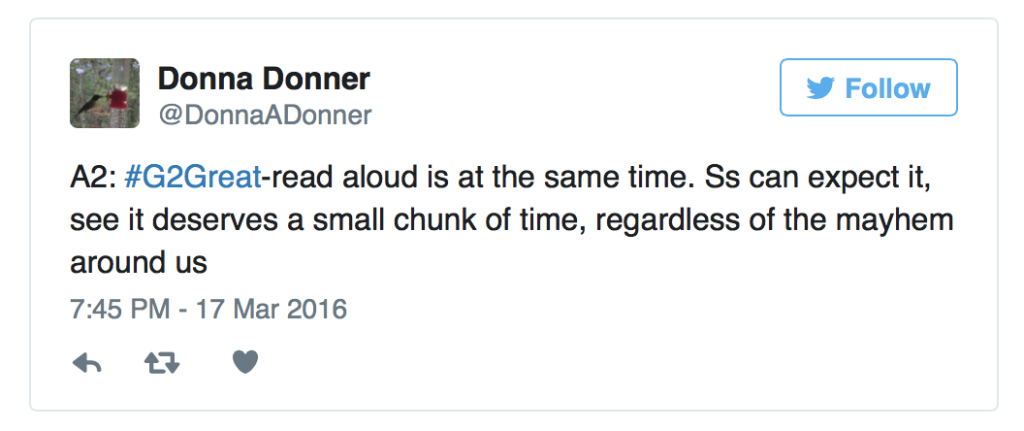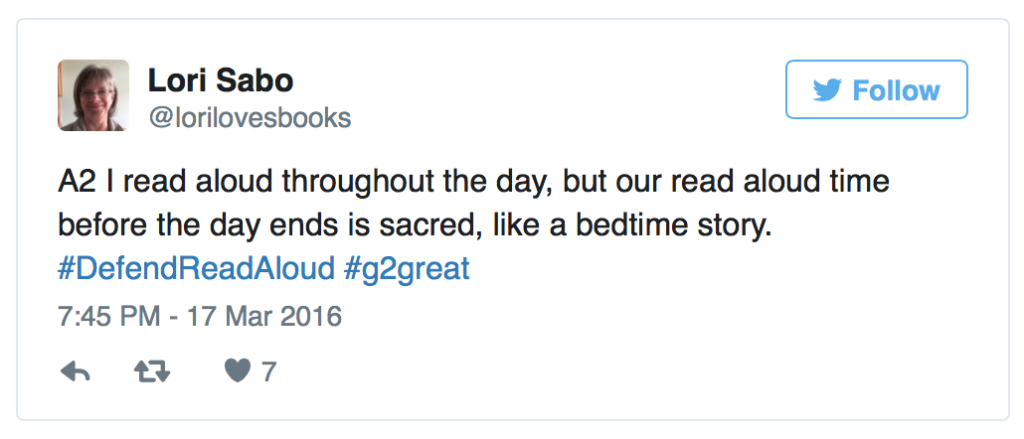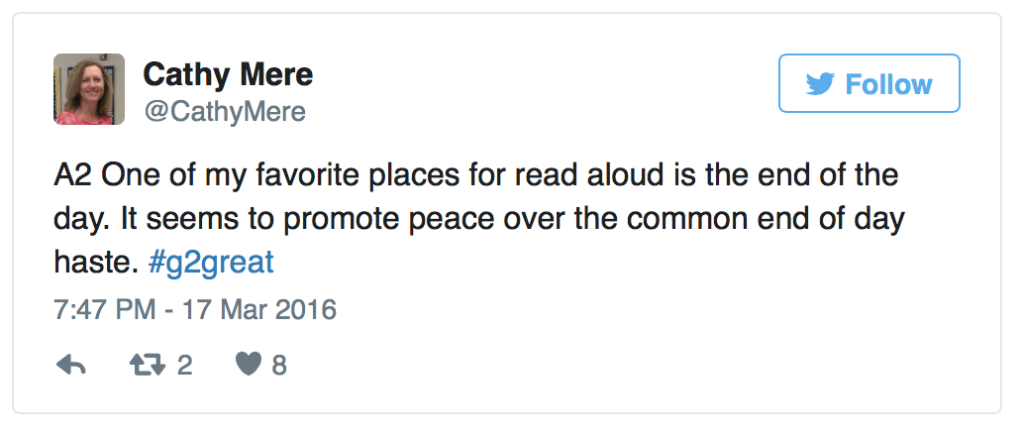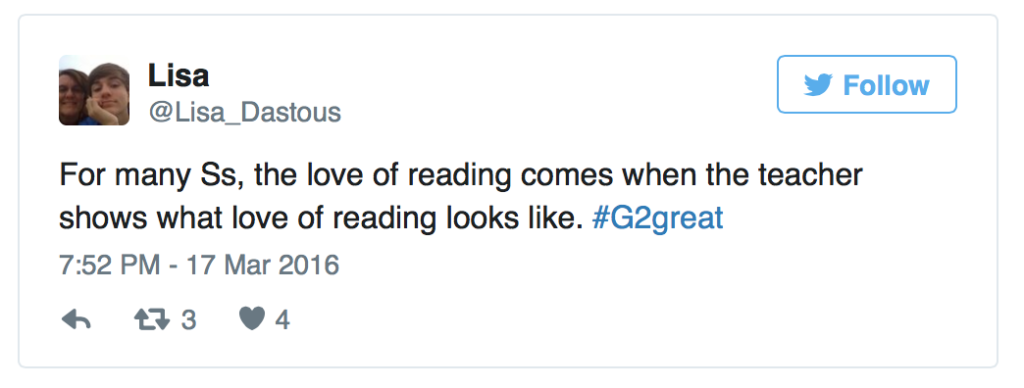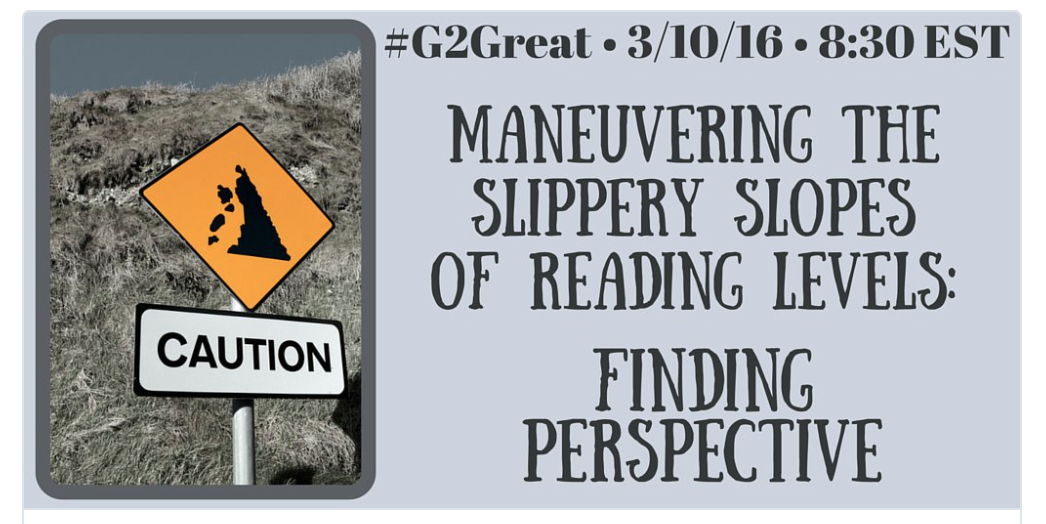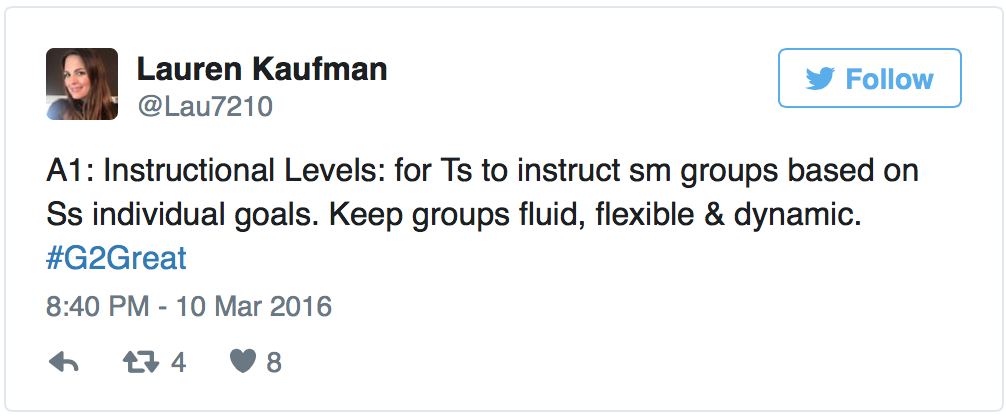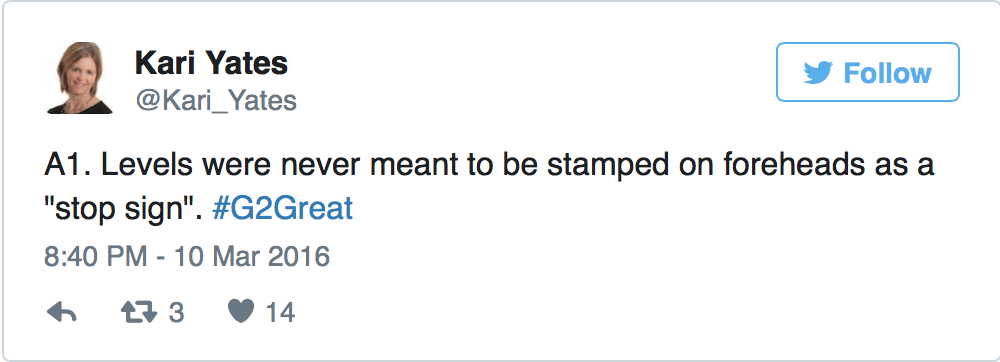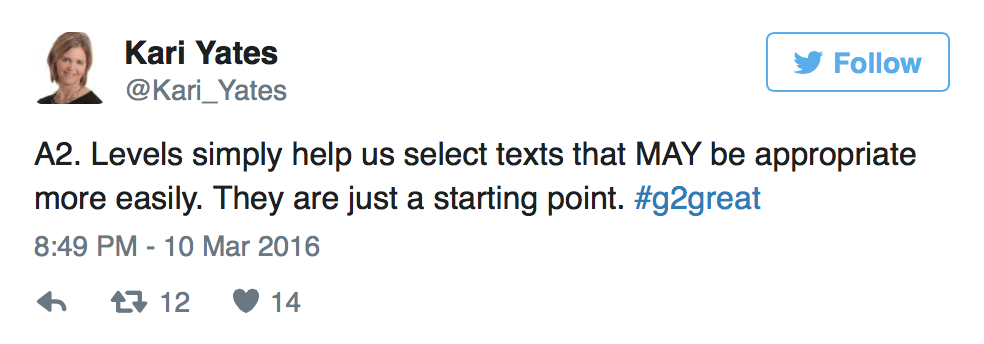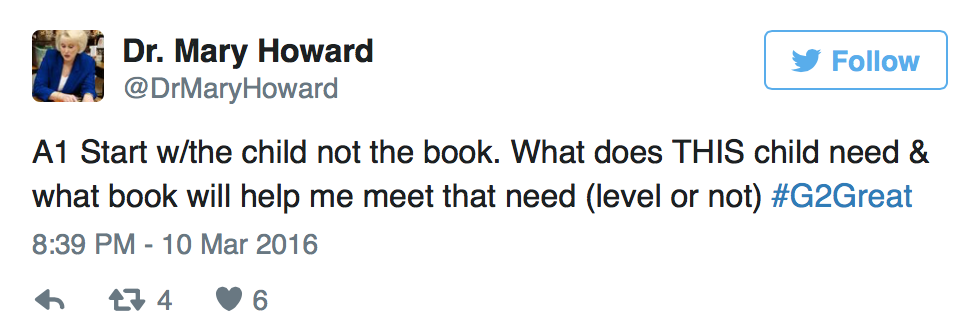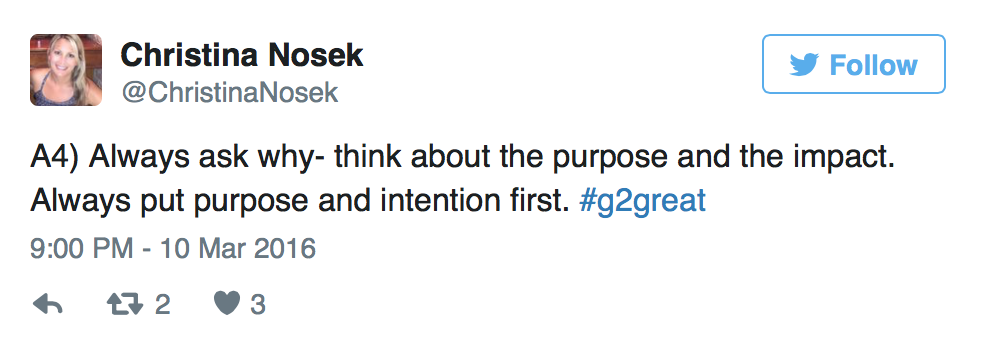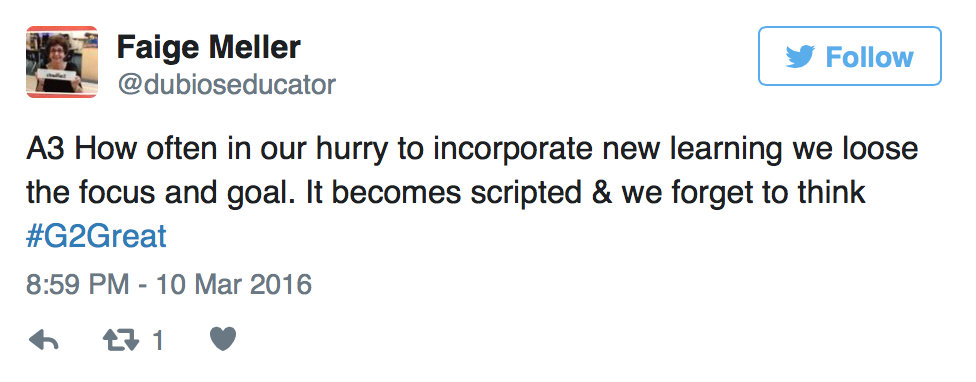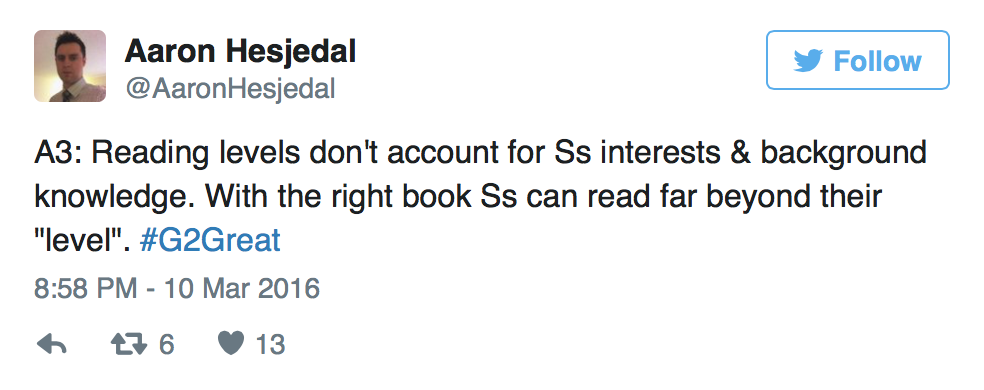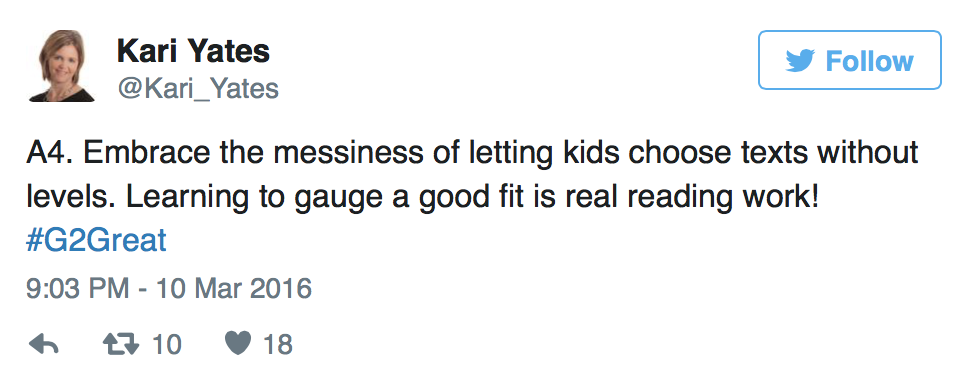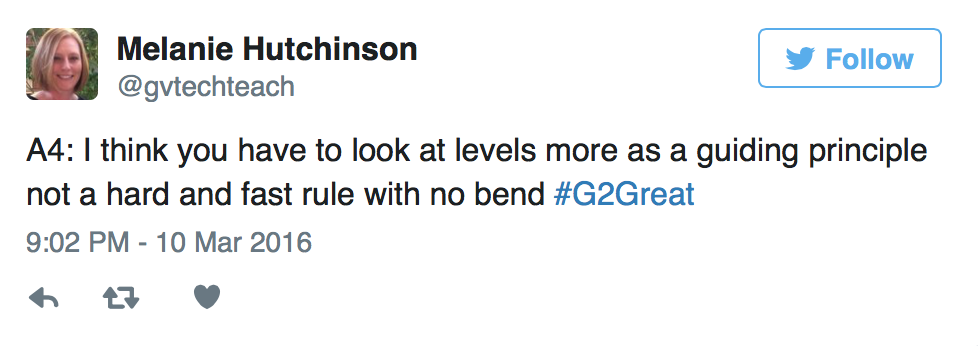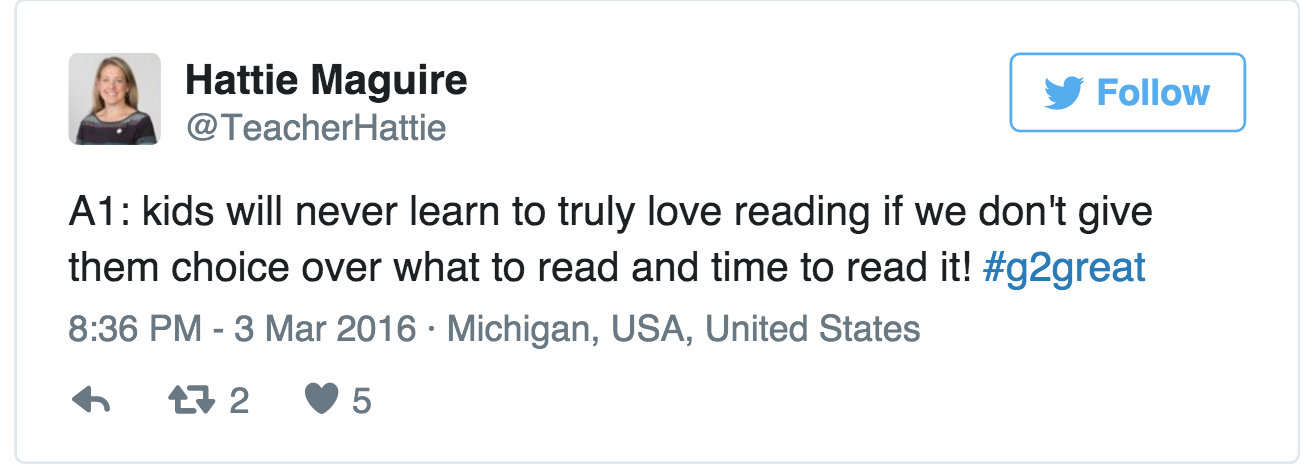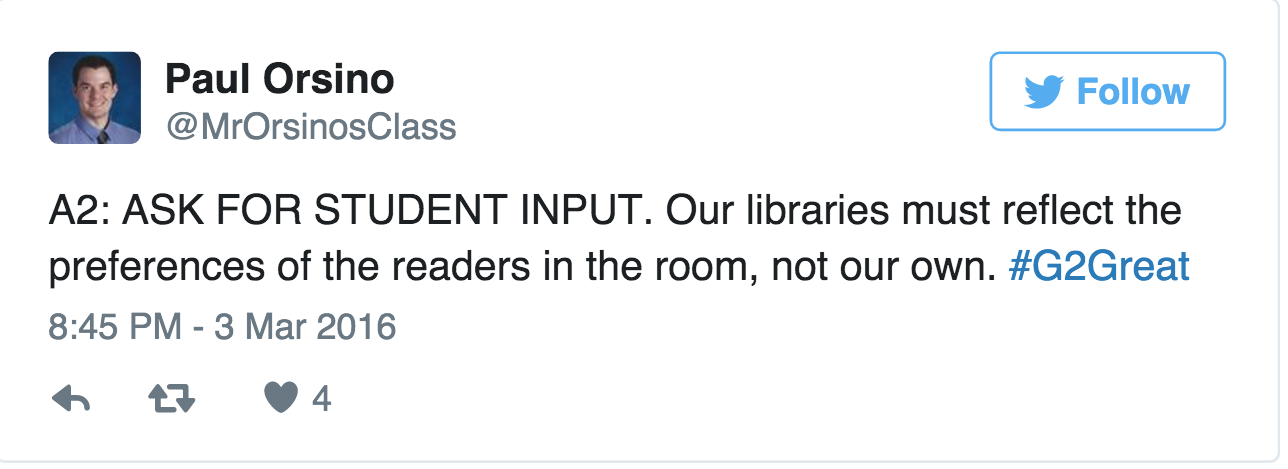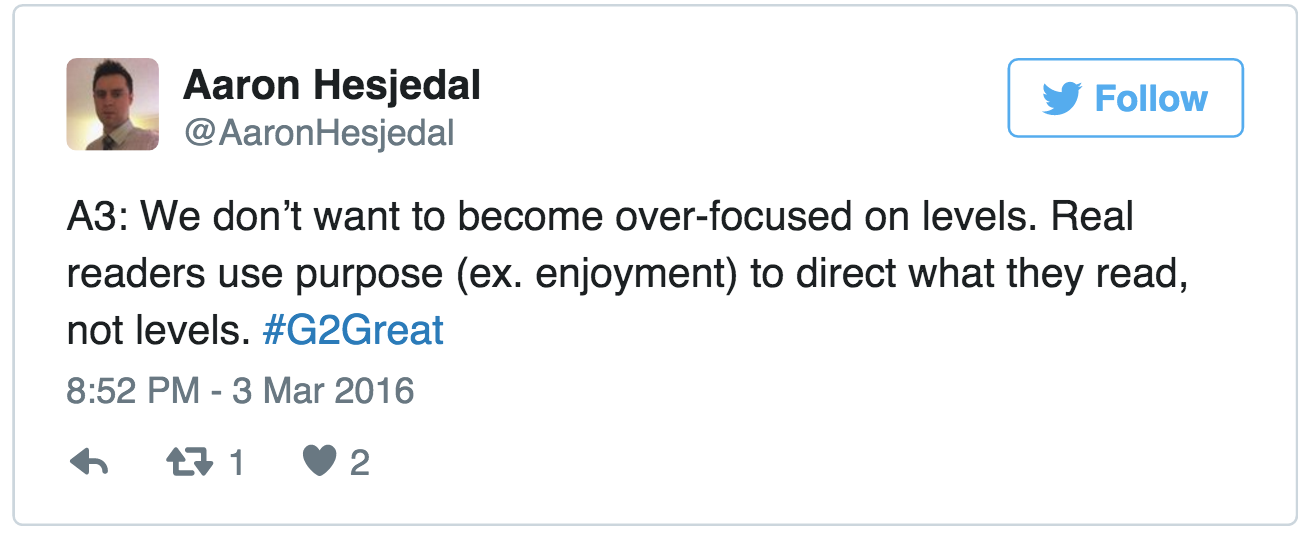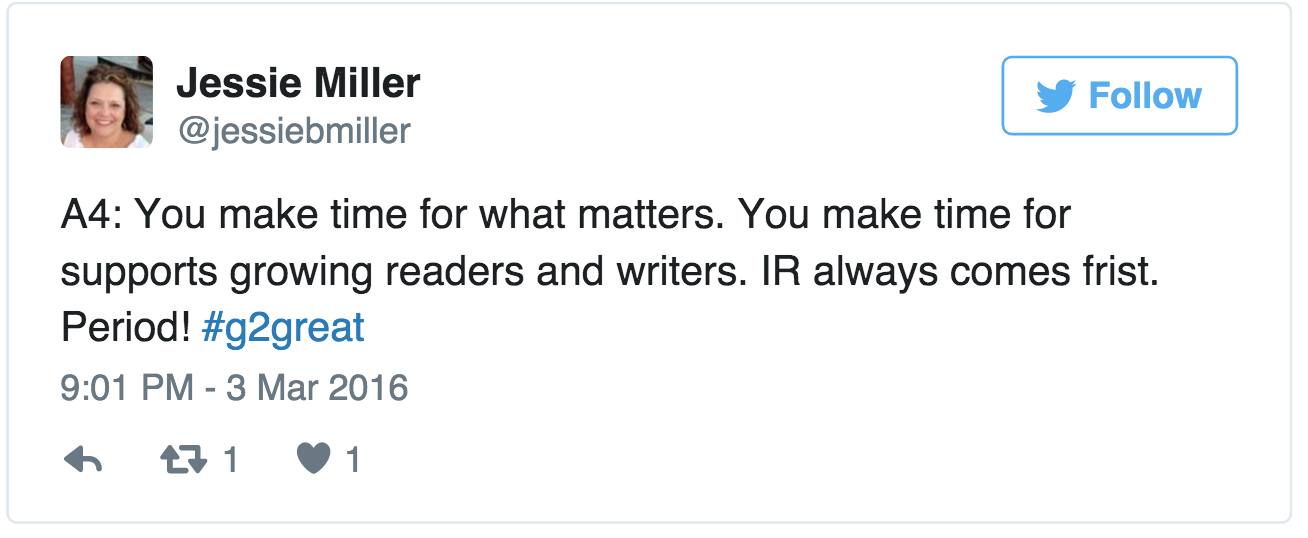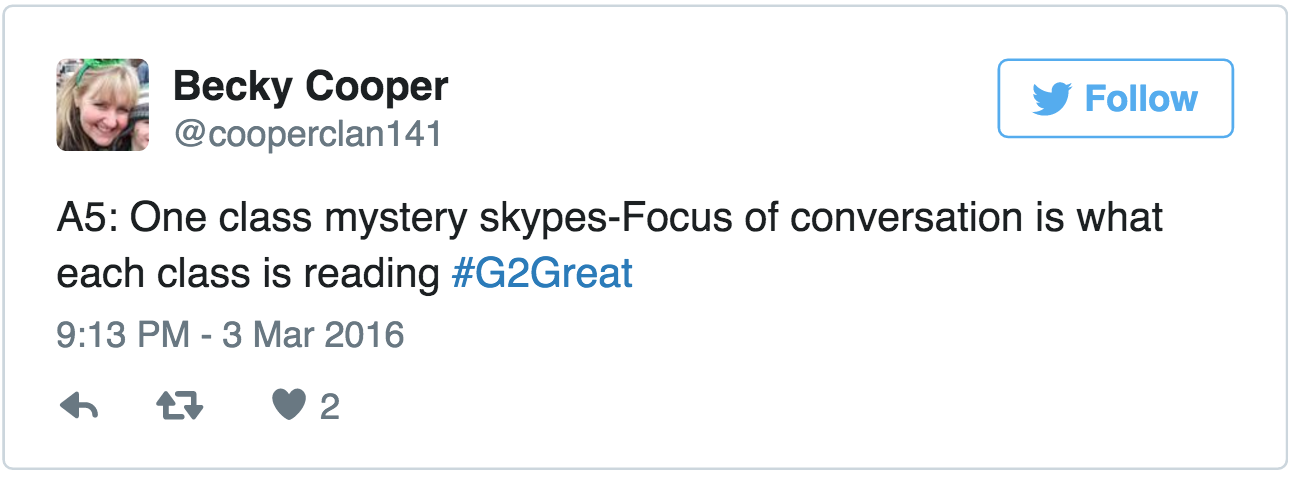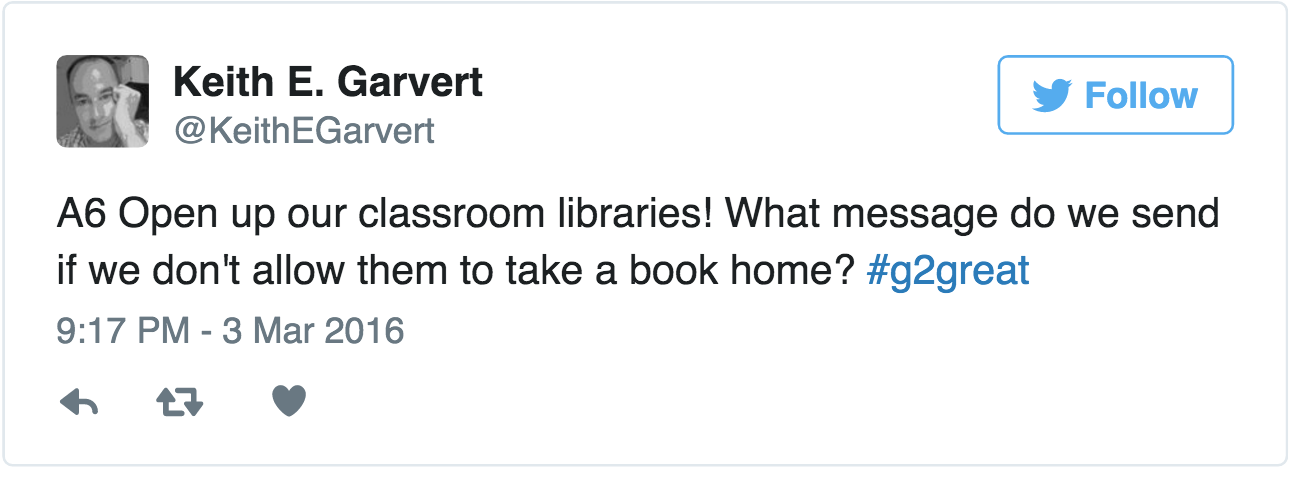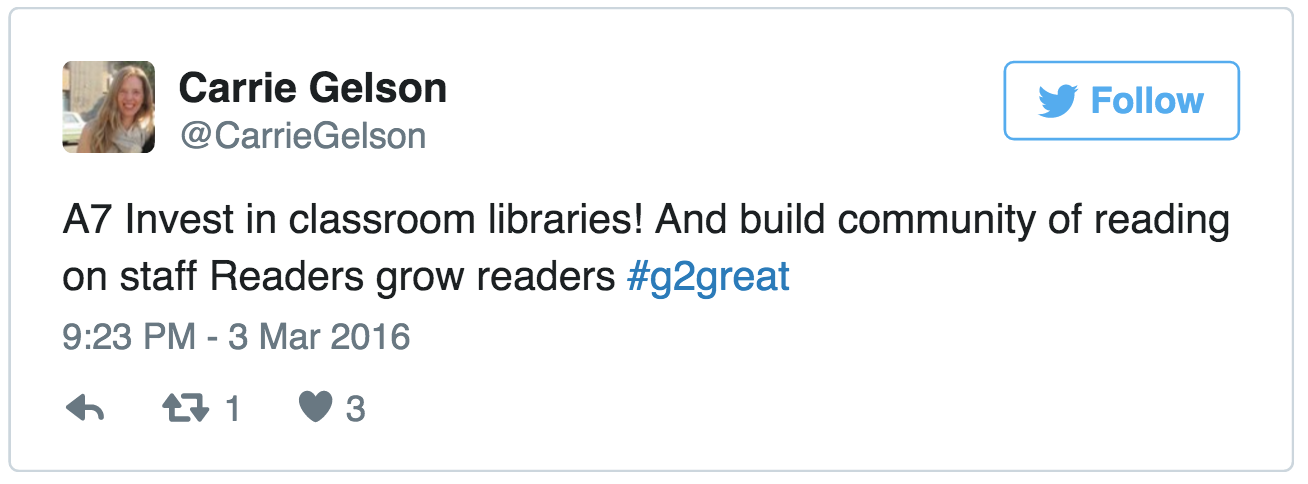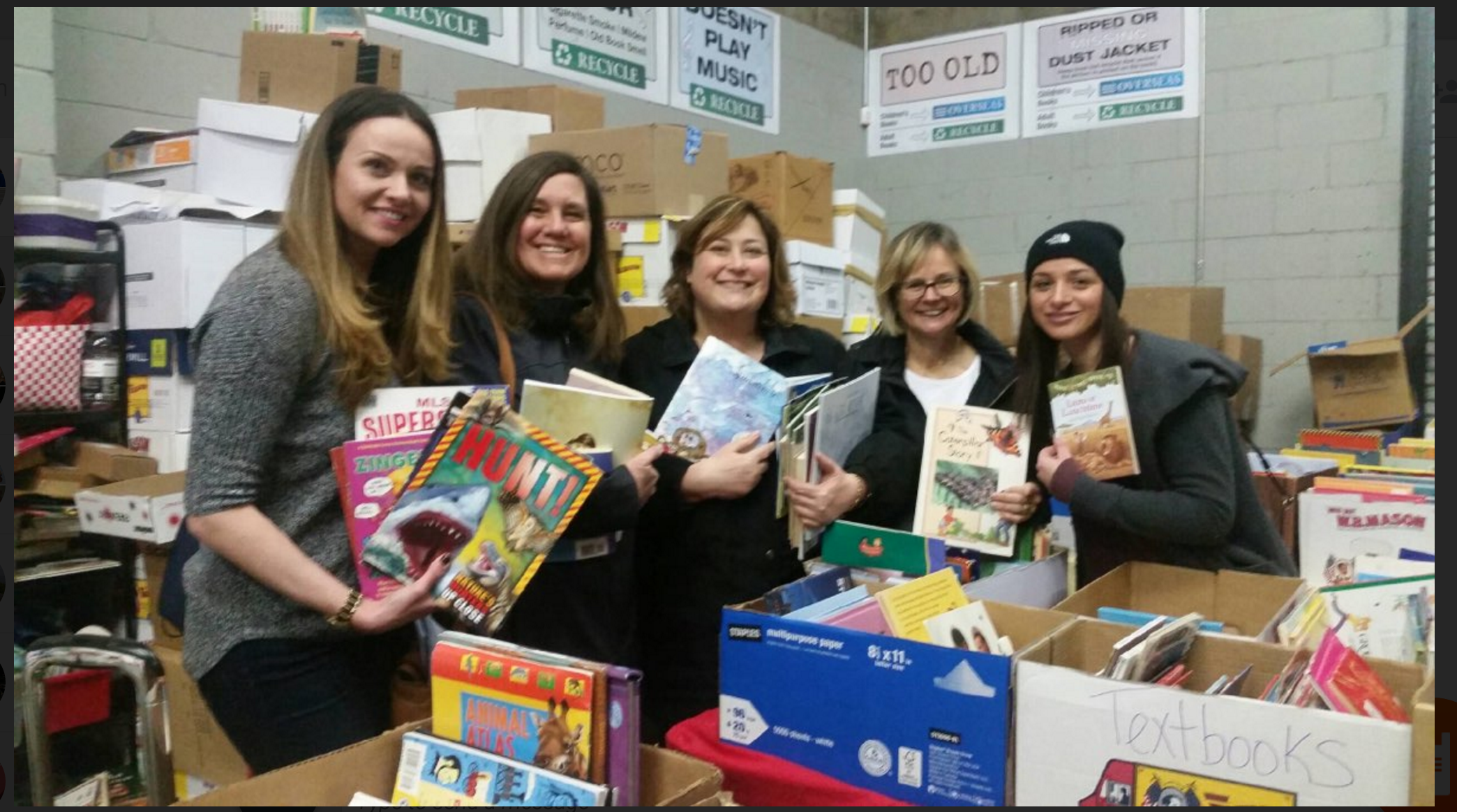by Mary Howard
On May 5, 2016, #G2Great continued a four-part series, Teaching with Intention: Maximizing Our Instructional POWER POTENTIAL. This week we put a spotlight on strategy instruction and set out to explore how to approach this work in ways that keep ‘students at the center’ of our efforts. Question 1 set the stage for our exploration: How can we more intentionally frame strategy instruction to increase student engagement in ways that maximize our instructional POWER POTENTIAL?
It’s not often that a single tweet to one question can capture the very essence of a chat, but Eric Davis managed to do exactly that with three words that still linger days later. His message is what strategy work with a heart is all about.
In Teaching Reading in Small Groups, Jennifer Serravallo describes strategies as “deliberate, effortful, intentional and purposeful actions a reader takes to accomplish a specific task or skill” (2010, 11-12). As I viewed this definition in light of Eric’s three words, I was struck by the idea that we will never make our students more deliberate, effortful, intentional, and purposeful if strategies are simply doled out dutifully like a thoughtless ‘to do list.’ Strategy work from the heart is about respecting the students.
As I pondered these words more deeply, thinking about how we can give our strategy work more heart in ways that focus on respecting the students, four interrelated R’s began to emerge:
Be Resolute
Respectful strategy work with a heart allows us to approach students with a sense of awe, secure in the belief that each child can and will become a strategic reader. We view students through a success lens, refusing to allow labels and misconceptions to cloud our view of the immense possibilities that reside within each of them. We recognize and honor their strengths and use them as a stepping-stone from where they are to where they could be. We recognize that there is no substitute for books that give them reasons to use strategies. As we teach strategies, we avoid jumping to the ‘rescue’ when they falter to make room for productive struggle as confidence and competence merge. We trust them to take the strategy reigns and then offer just right instructional support while noticing when to fade that support as we step away.
Be Responsive
Respectful strategy work with a heart reminds us that we cannot do this work unless we know the child in front of us and thoughtfully ponder how to best meet that child’s needs at that moment. We teach strategies based on day-to-day assessment rather than numerical data that leads to strategy groups more akin to instructional cattle calls. We make kidwatching a high priority practice, opting to trust our noticings and wonderings captured on anecdotal references rather than nameless spreadsheets that lose the child in the translation. We rely on strategies that rise from authentic learning with a focus on process over product as we build strategic knowledge and promote independent problem solving in the context of meaningful literacy. We acknowledge that respectful strategy work with a heart only occurs when a book, a reader and a knowledgeable teacher cross paths.
Be Responsible
Respectful strategy work with a heart draws from this knowledge as it affords us opportunities to select just right strategies at just right moments. We honor what the child brings to the learning table at that point and time and fine-tune our strategy work in ways that will accommodate those needs. We avoid instructional quick fixes and one-size-fits-all strategies as we recognize that we must choose strategies purposefully based on each child. We know that hyper-fidelity to scripts can cloud our view and lead to lock step teaching far removed from child. We steadfastly insist on maintaining control for professional decision-making and make choices based on our knowledge of students and refuse to make any excuses why we can’t.
Be Relentless
Respectful strategy work with a heart requires unwavering commitment to what may well be most critical in a time in education where distractions and questionable suggestions abound. We keep our WHY in mind as we pursue a reader-centered classroom with a vengeance by making a commitment to actively engage students in joyful daily self-selected reading regardless of the other demands in our day. We use strategies within and beyond those experiences, making sure to put books in their hands that give our strategy instruction wings. We do this because we know that strategy work is not the end goal but a means to an end as described by Jennifer Serravallo:
You could be the most eloquent teacher, the best strategy group facilitator, the most insightful conferrer. But if you send your kids back for independent reading and they don’t read, then they won’t make the progress you are hoping and working for. Jennifer Serravallo
When we are committed to respectful strategy work with a heart we teach within a spirit of Resolute, Responsive, Responsible and Relentless teaching. In short, we are “respecting the students.” Through all of this work, we hold tight to our deep belief that we must celebrate the children in front of us and do all we can to set them down a path to becoming lifelong readers within and beyond the school day.
Sharon Murphy makes this point stating, “When pleasure and reading are companions…children become engaged readers and are likely to continue to read throughout their lives.”
If our goal is respectful strategy work with a heart, pleasure and reading will be companions for every child. After all, isn’t that why we do this wonderful work?


